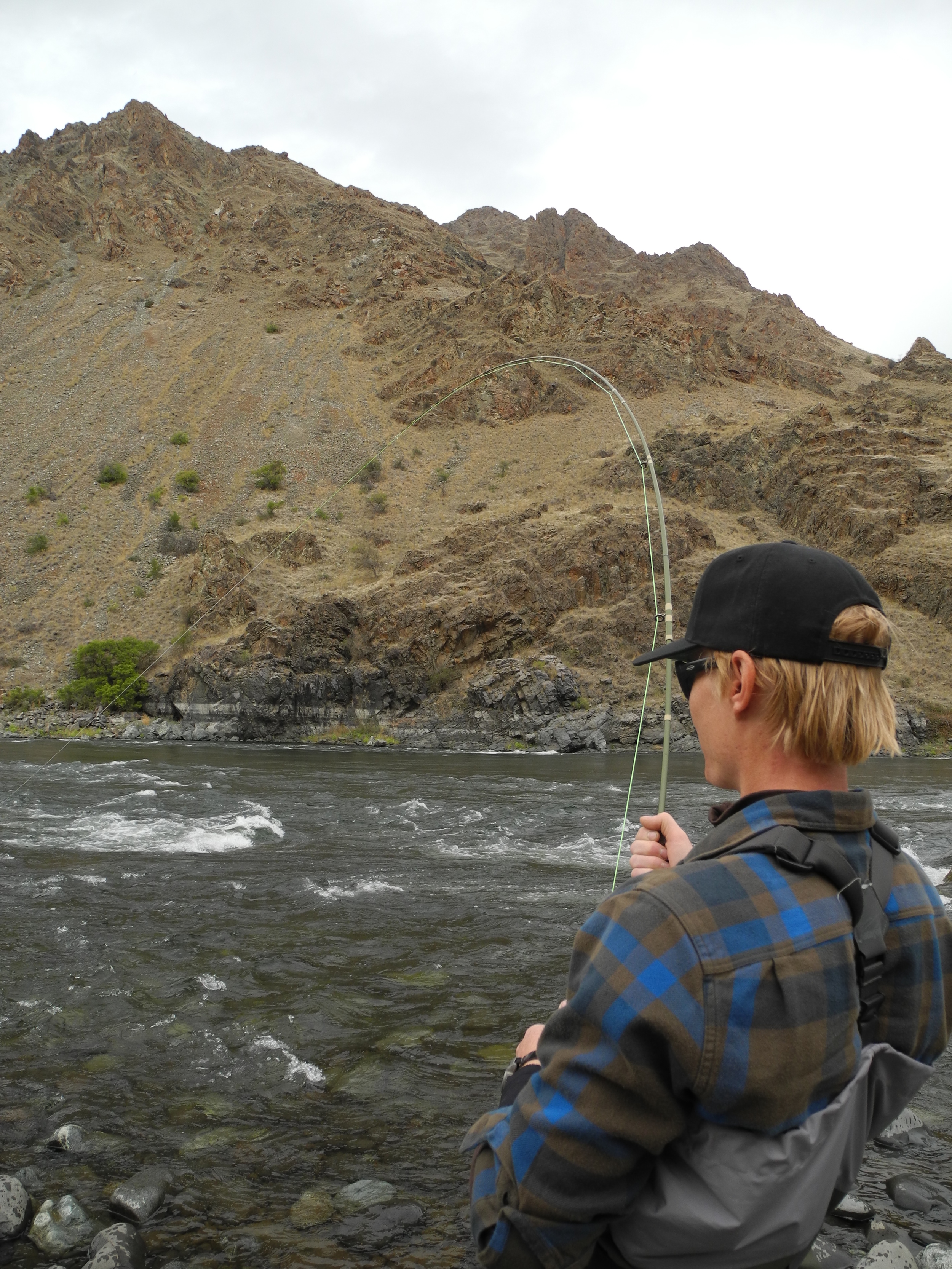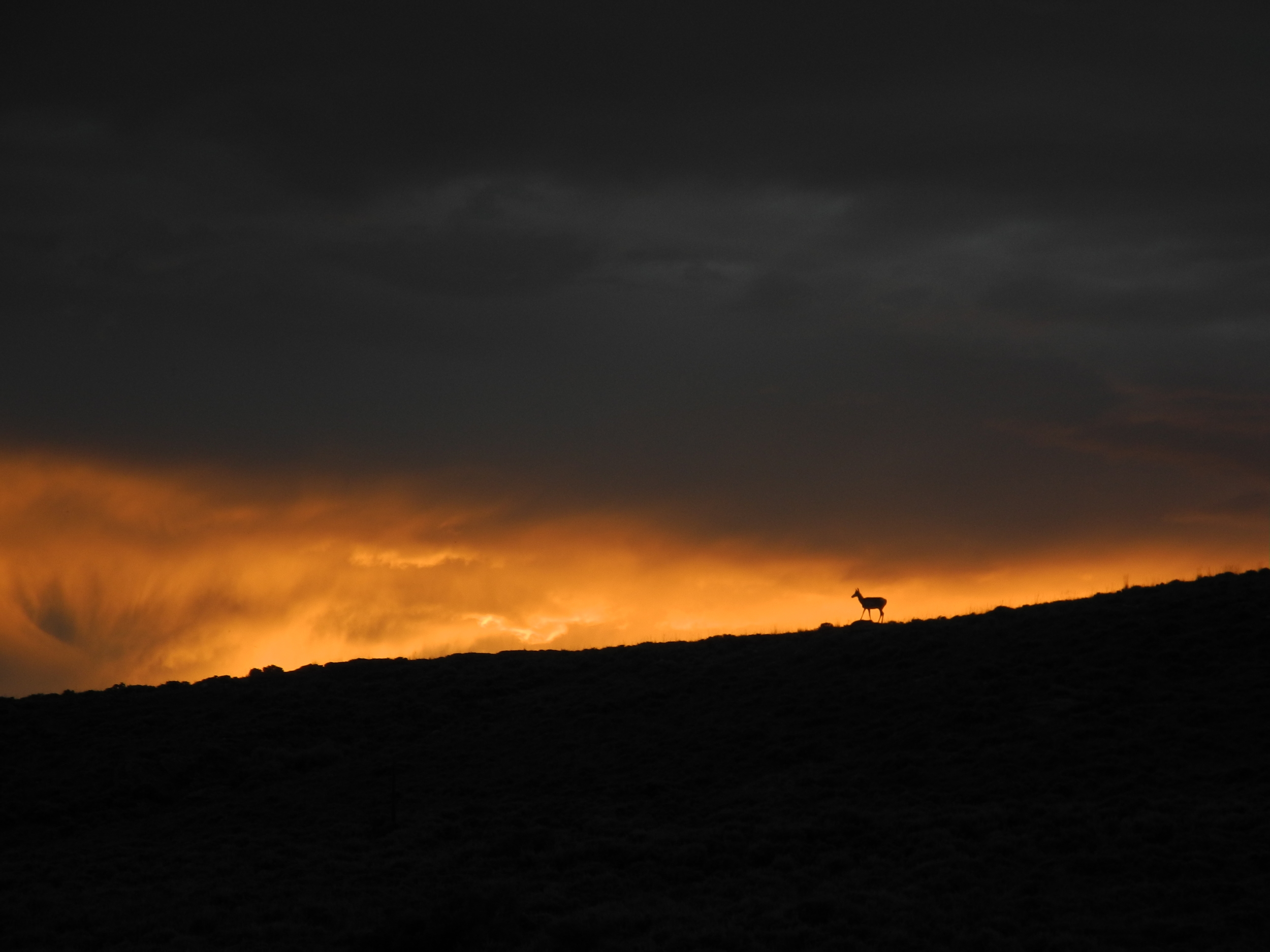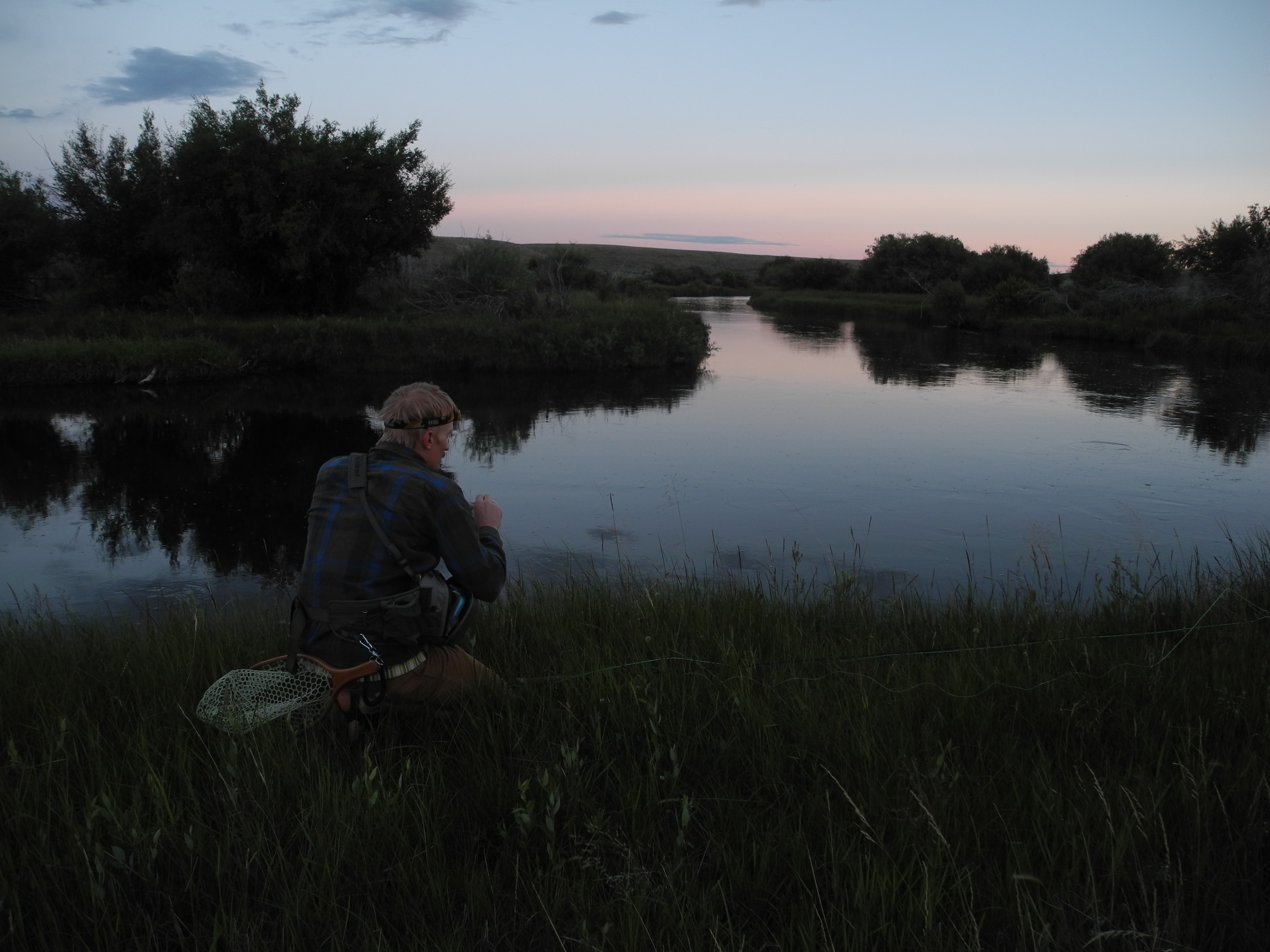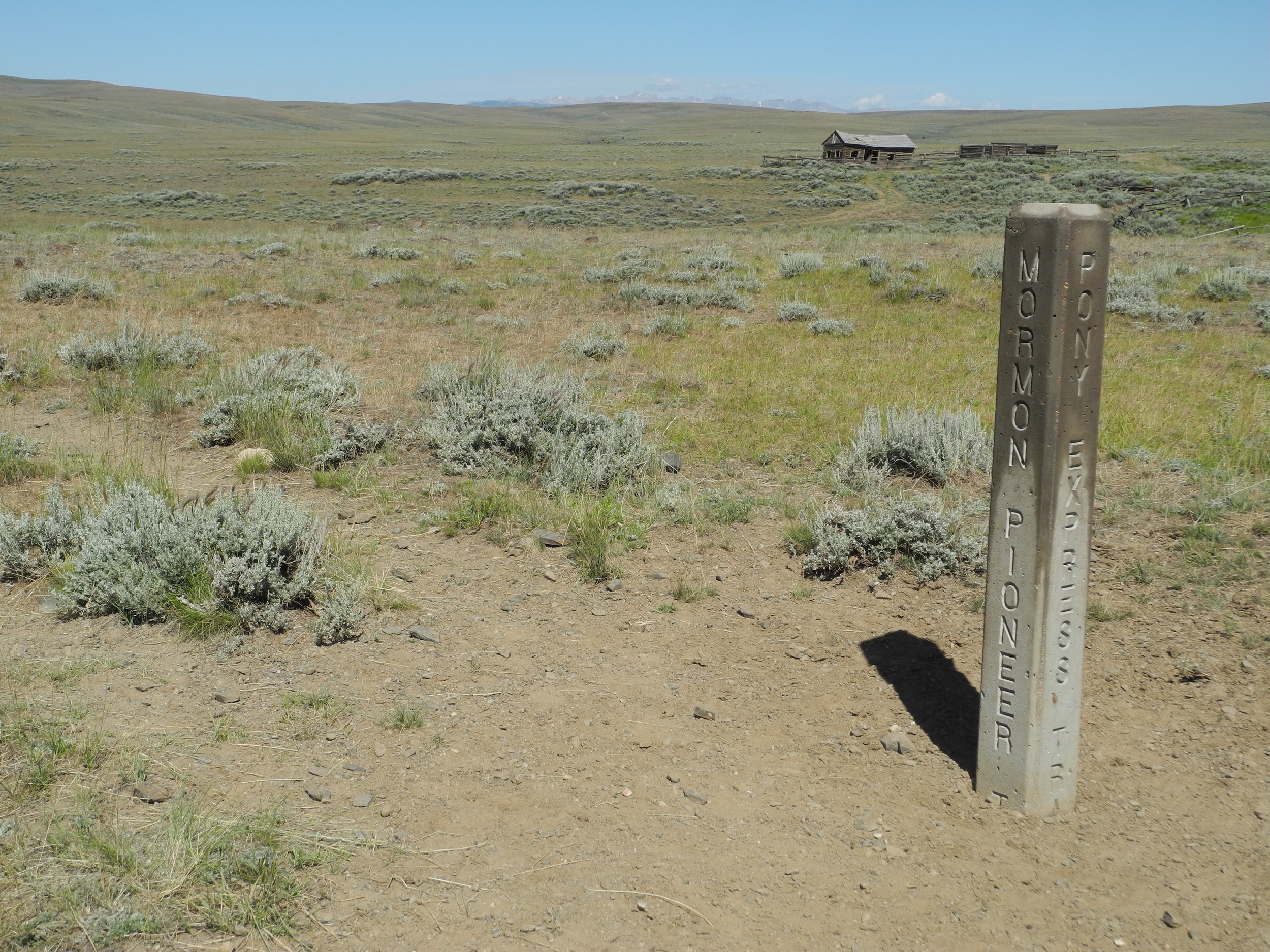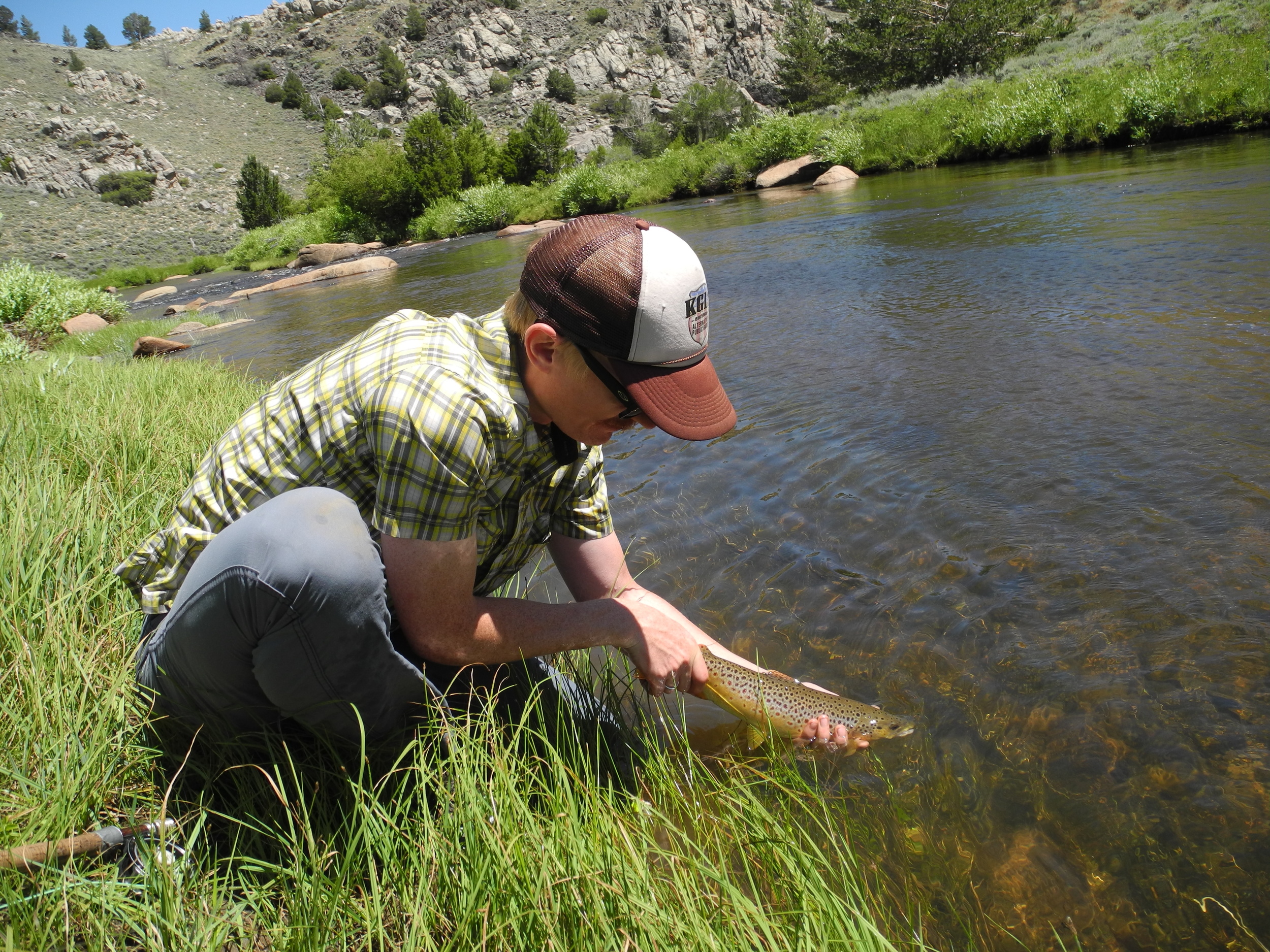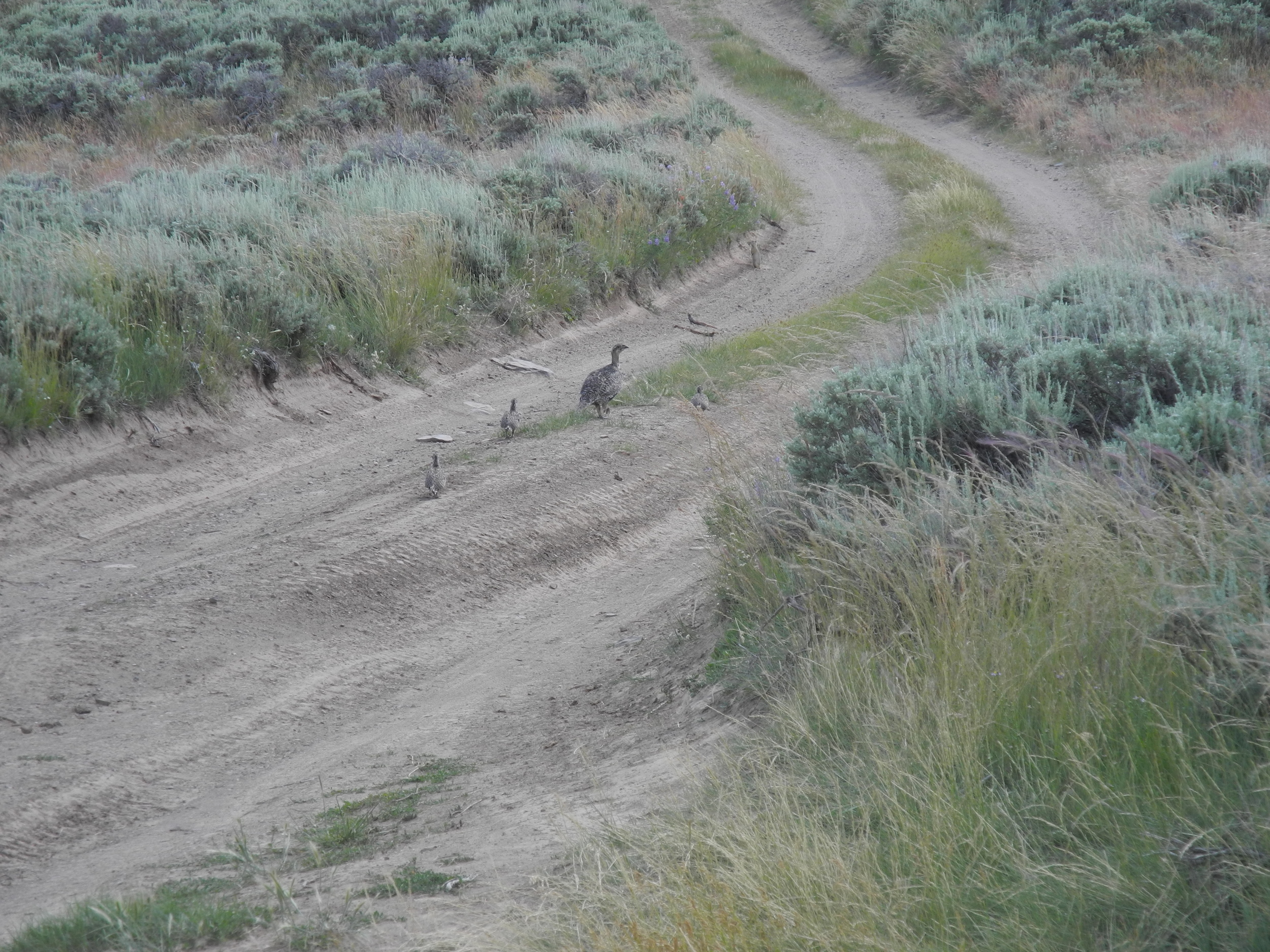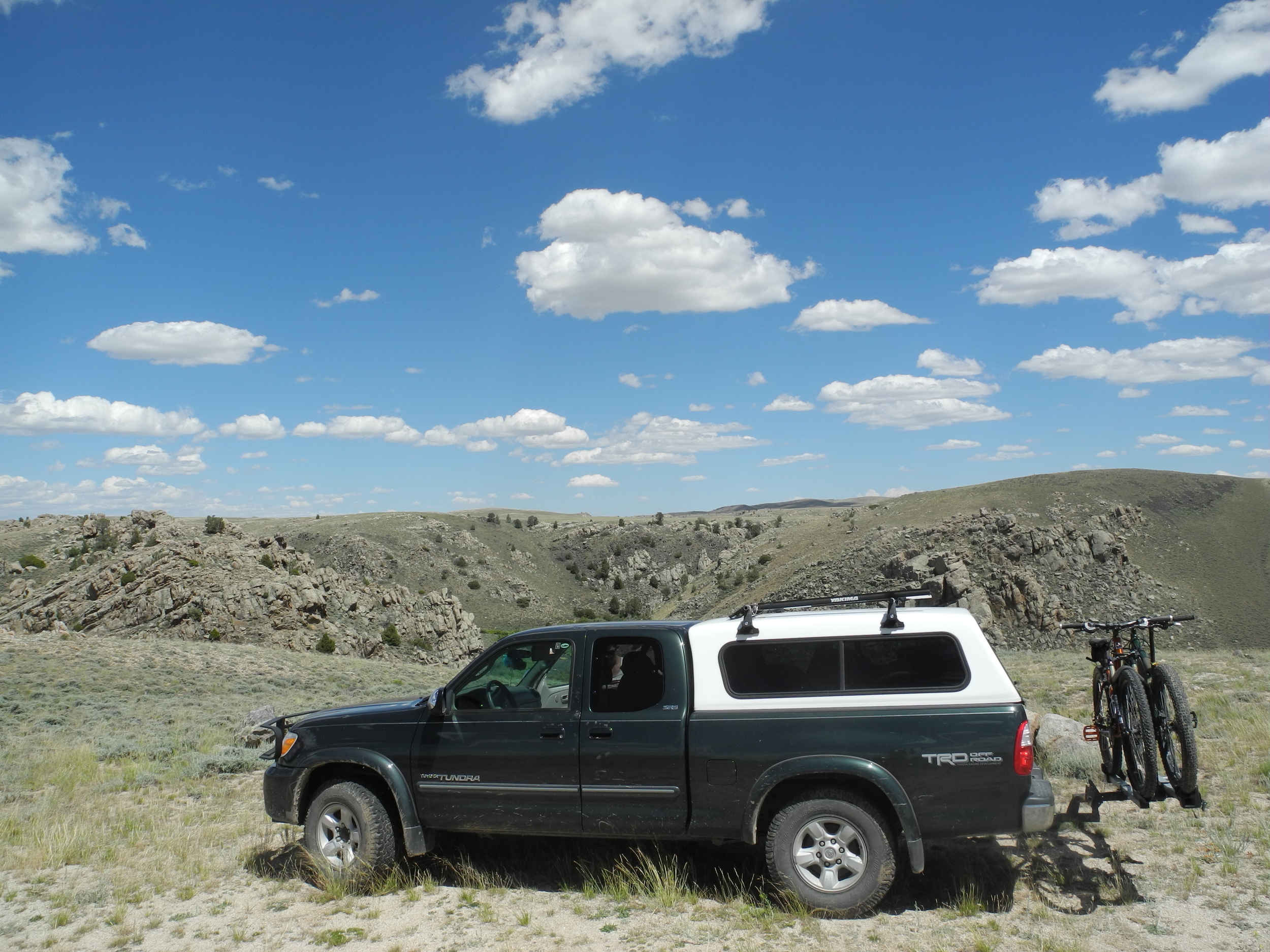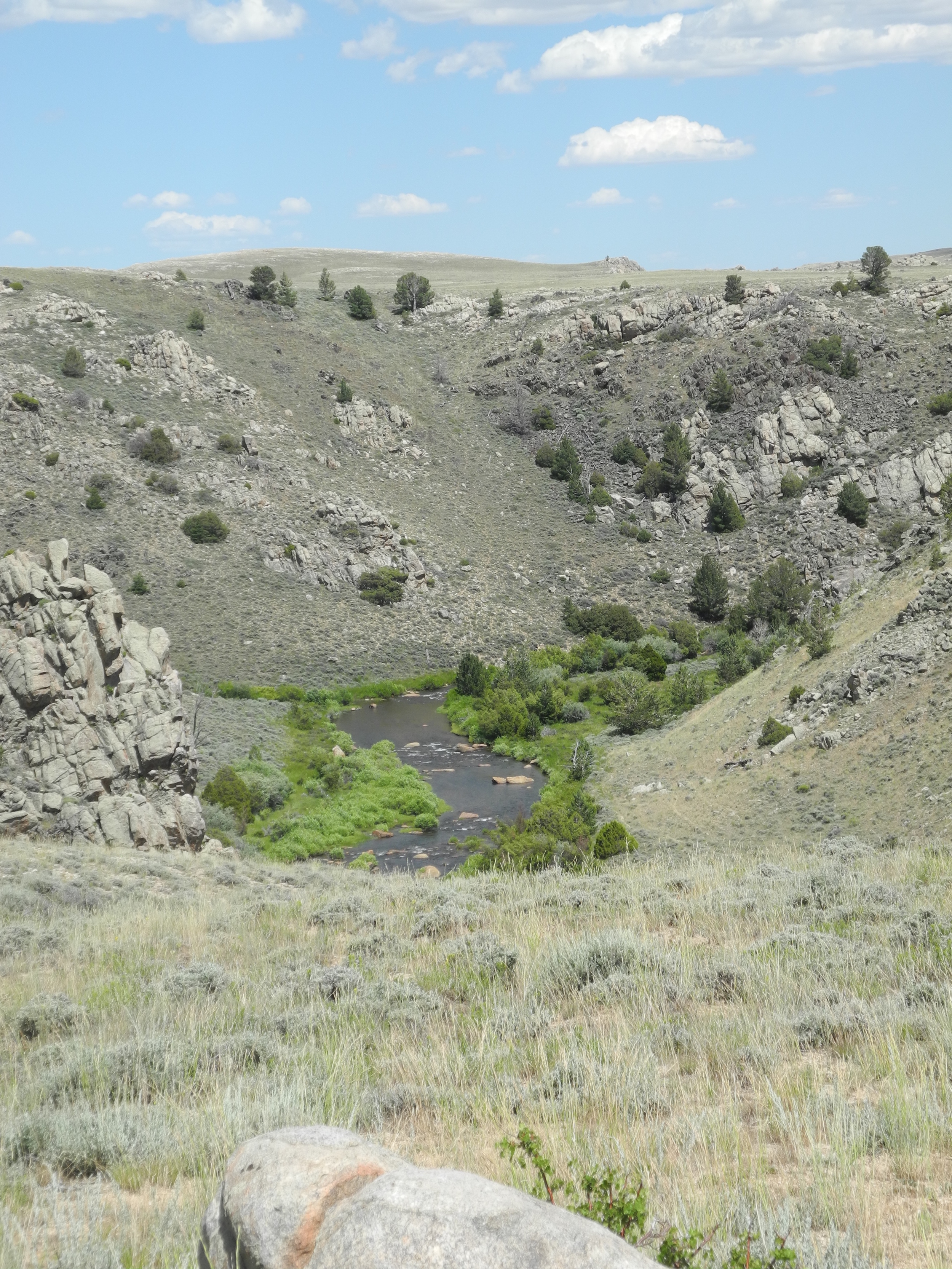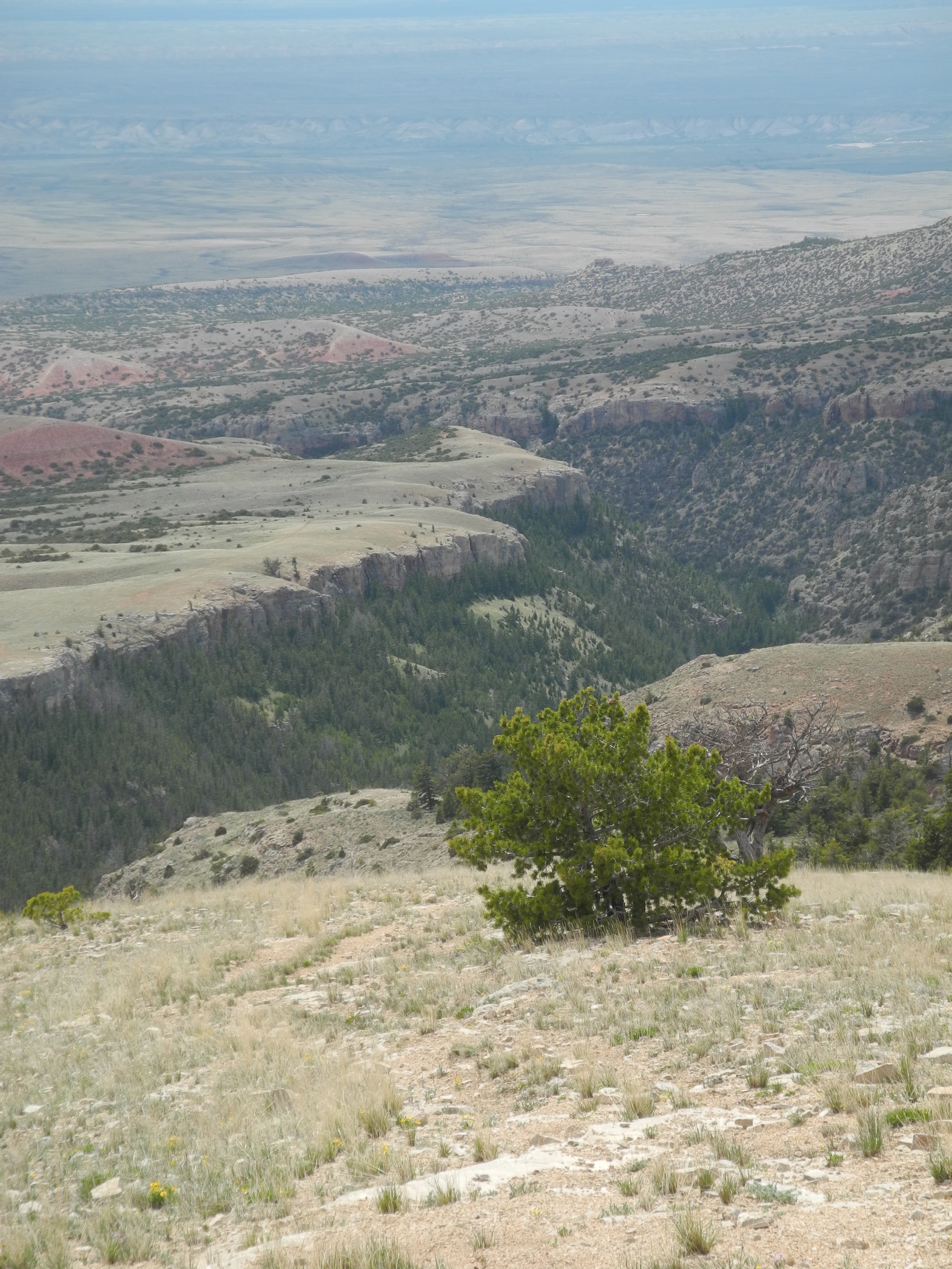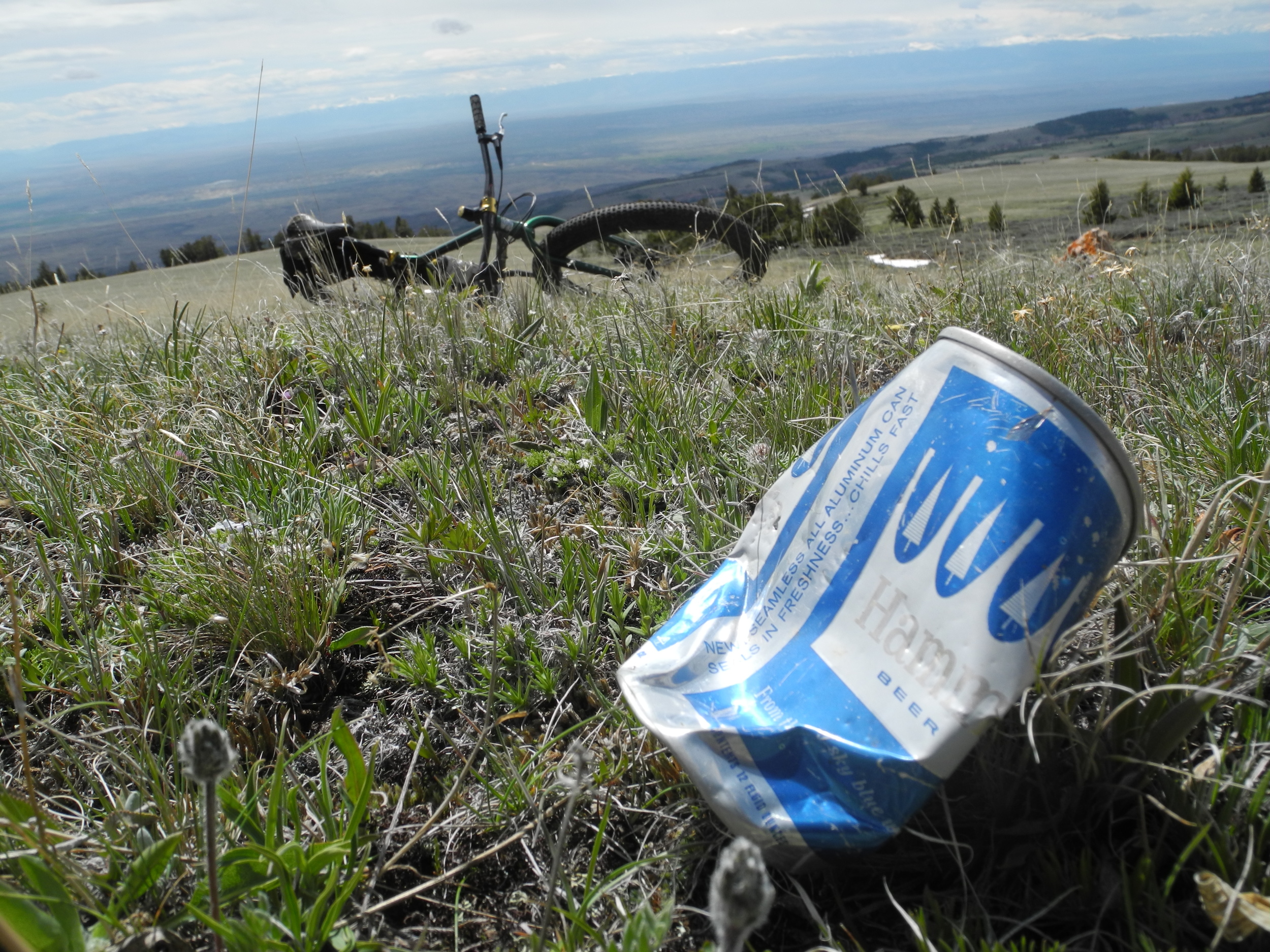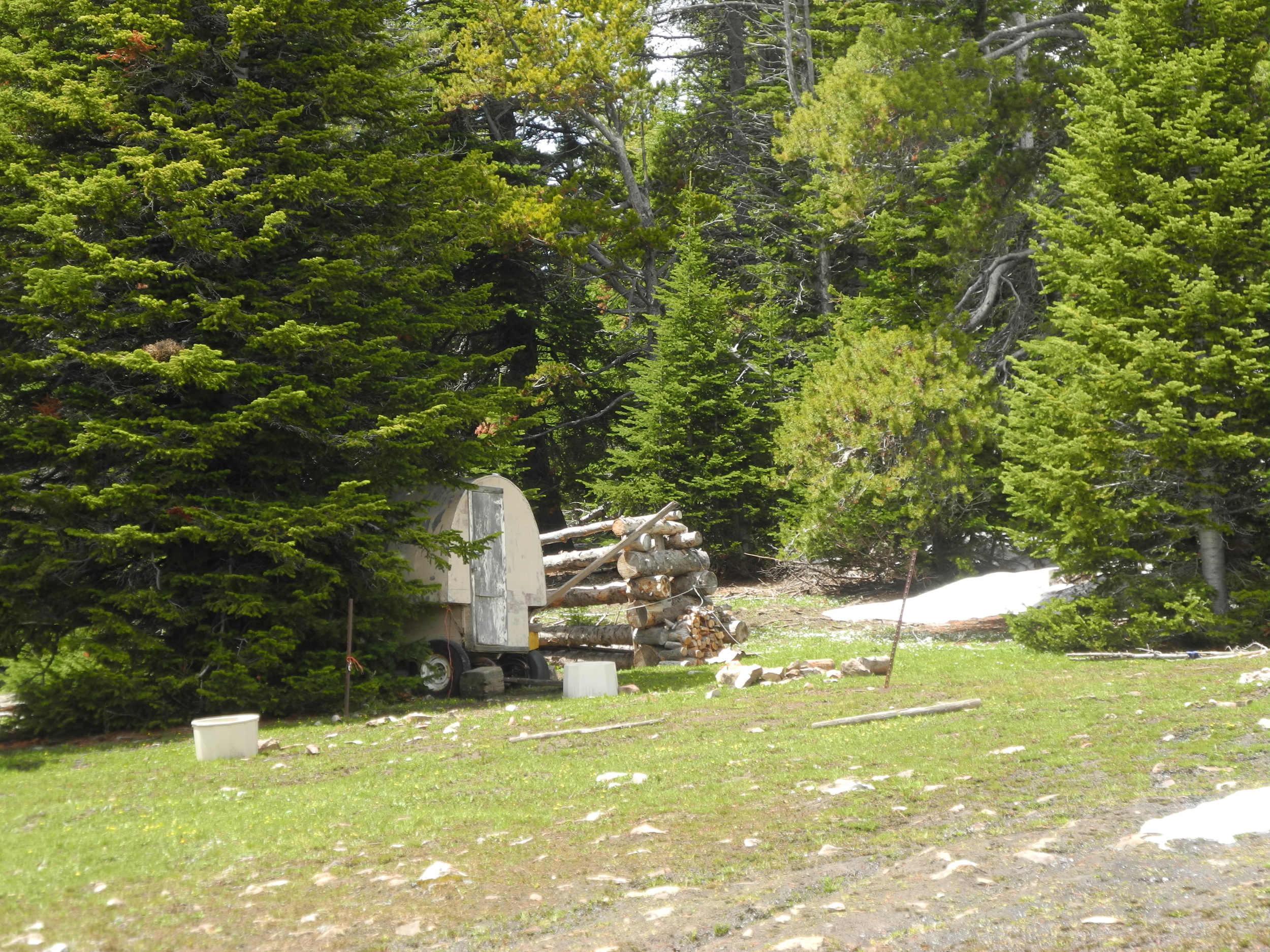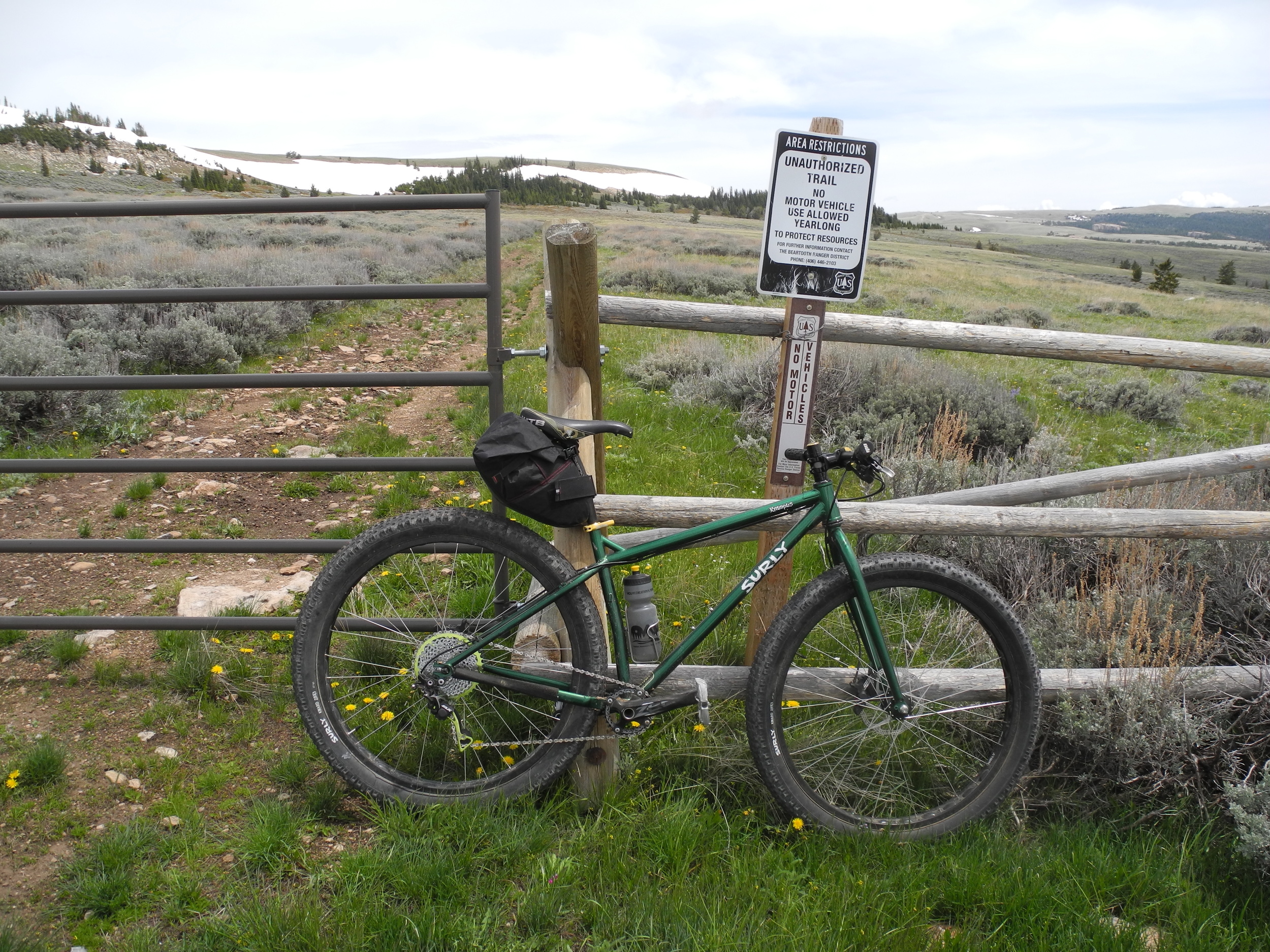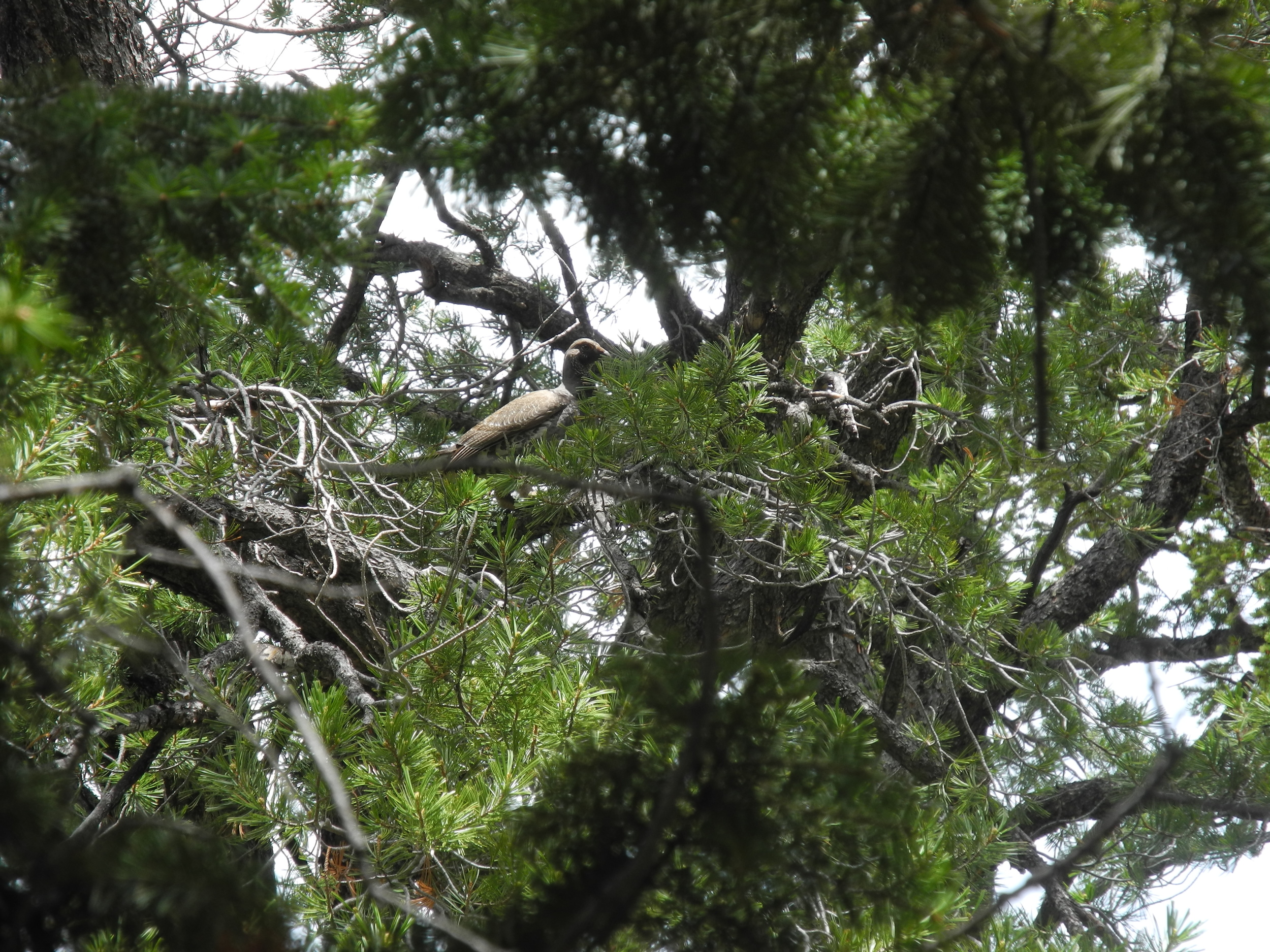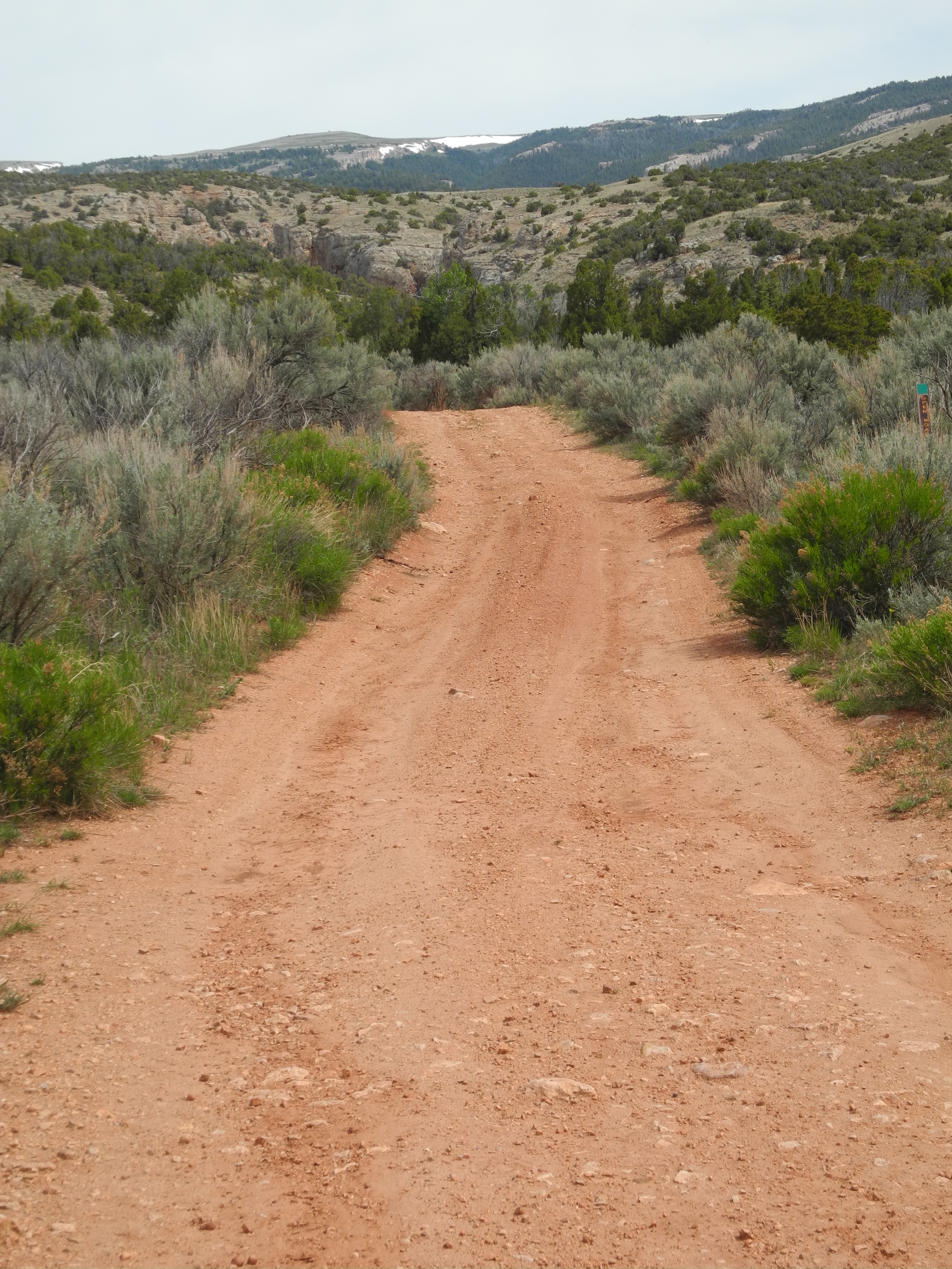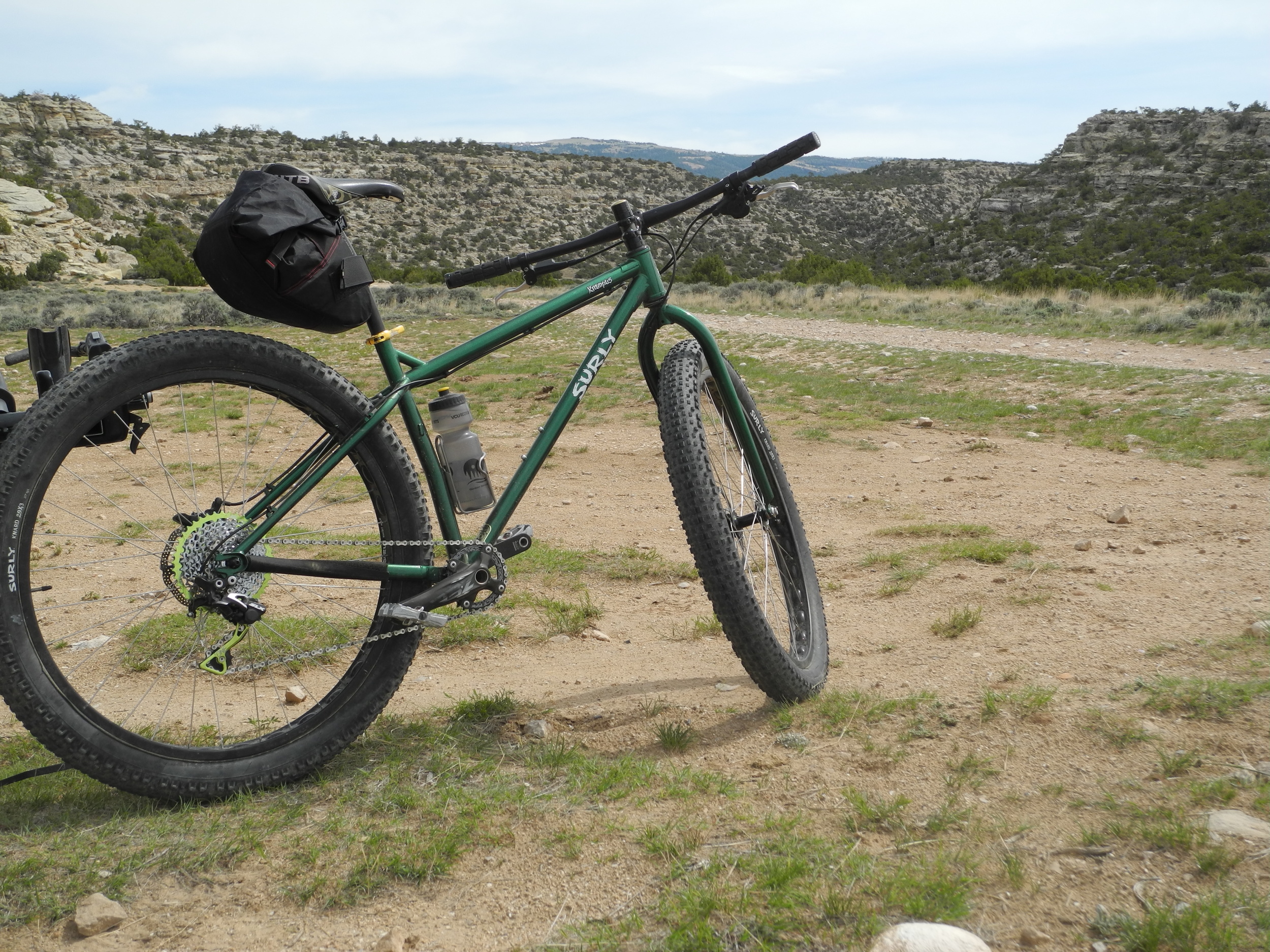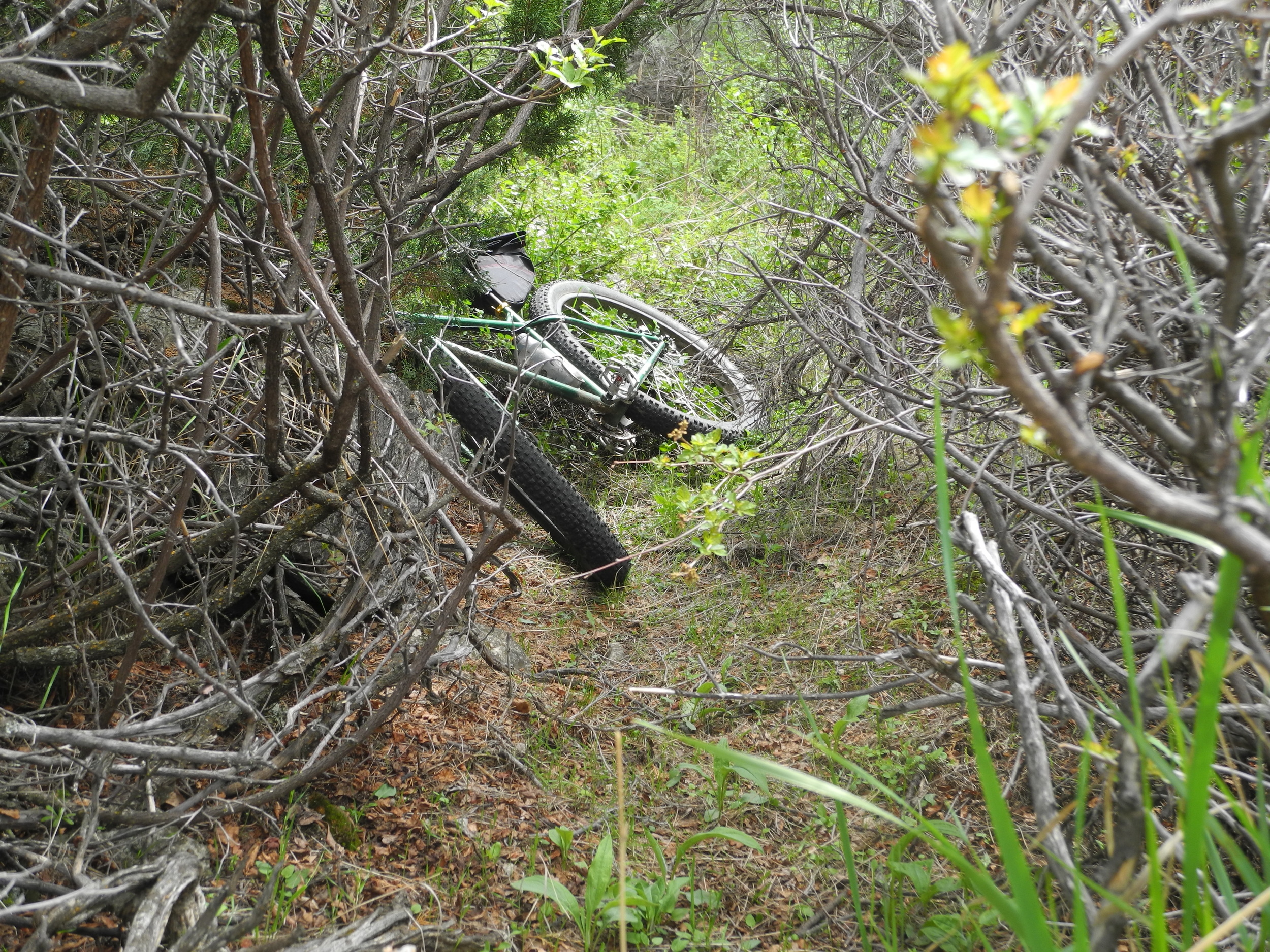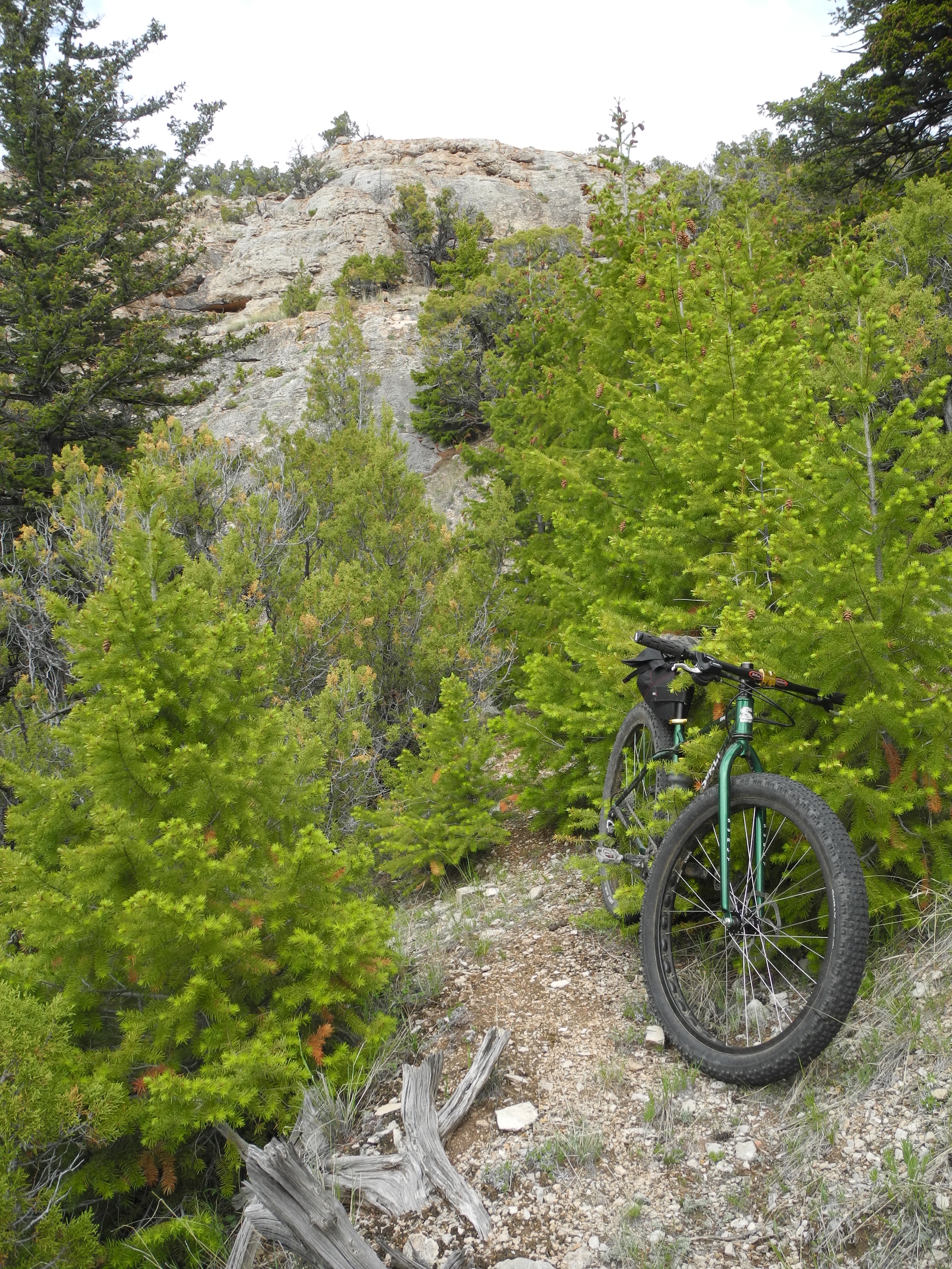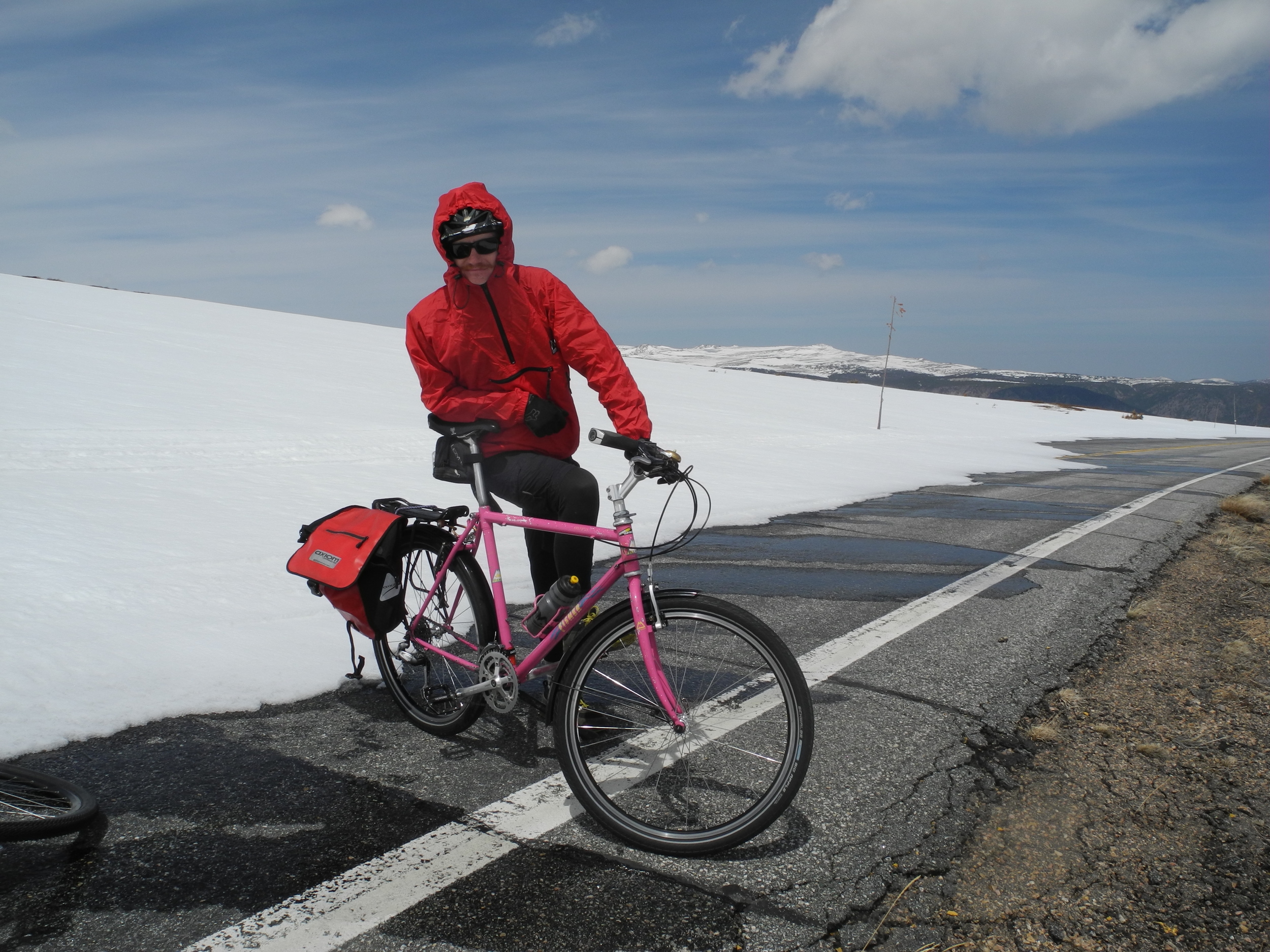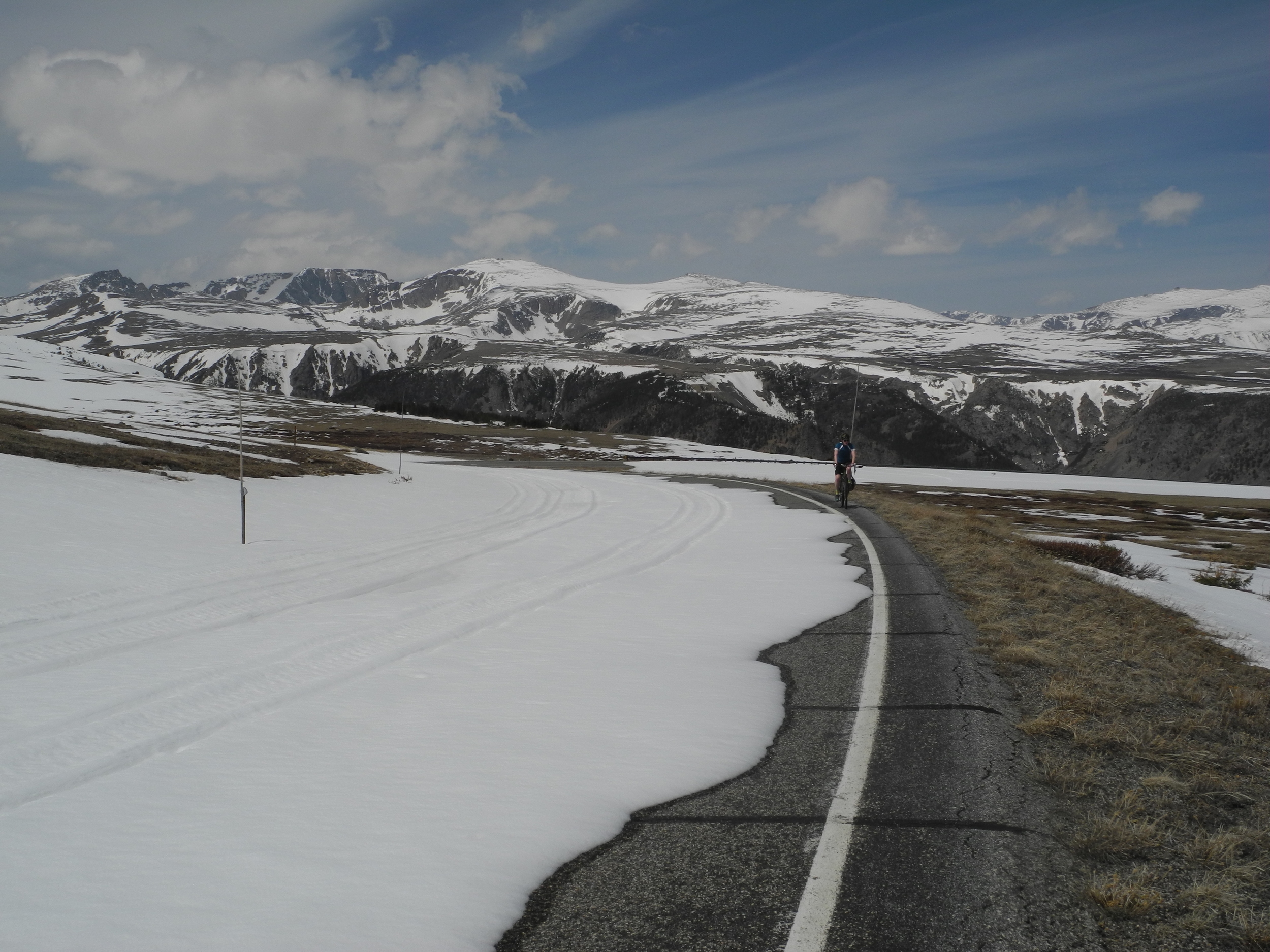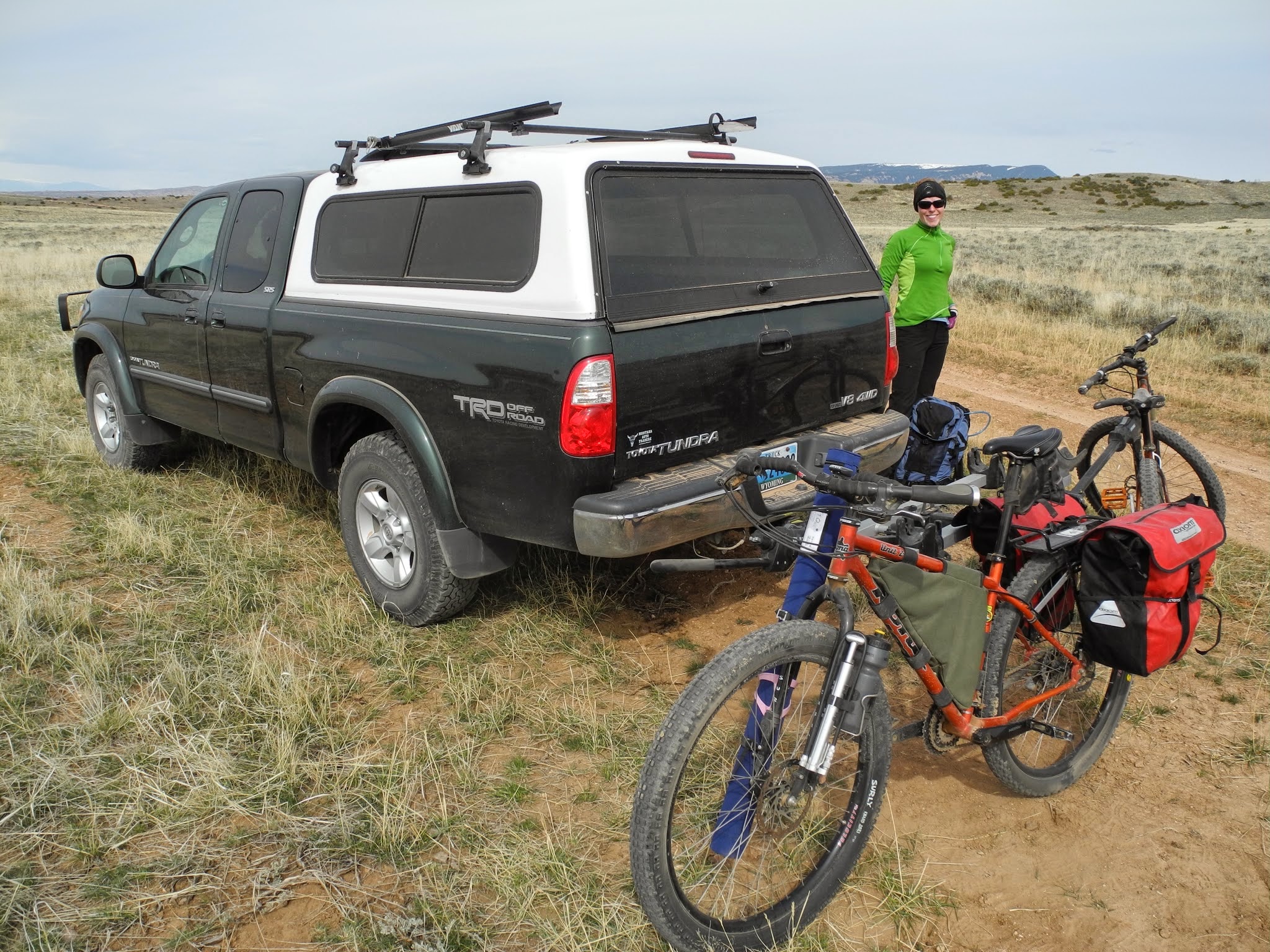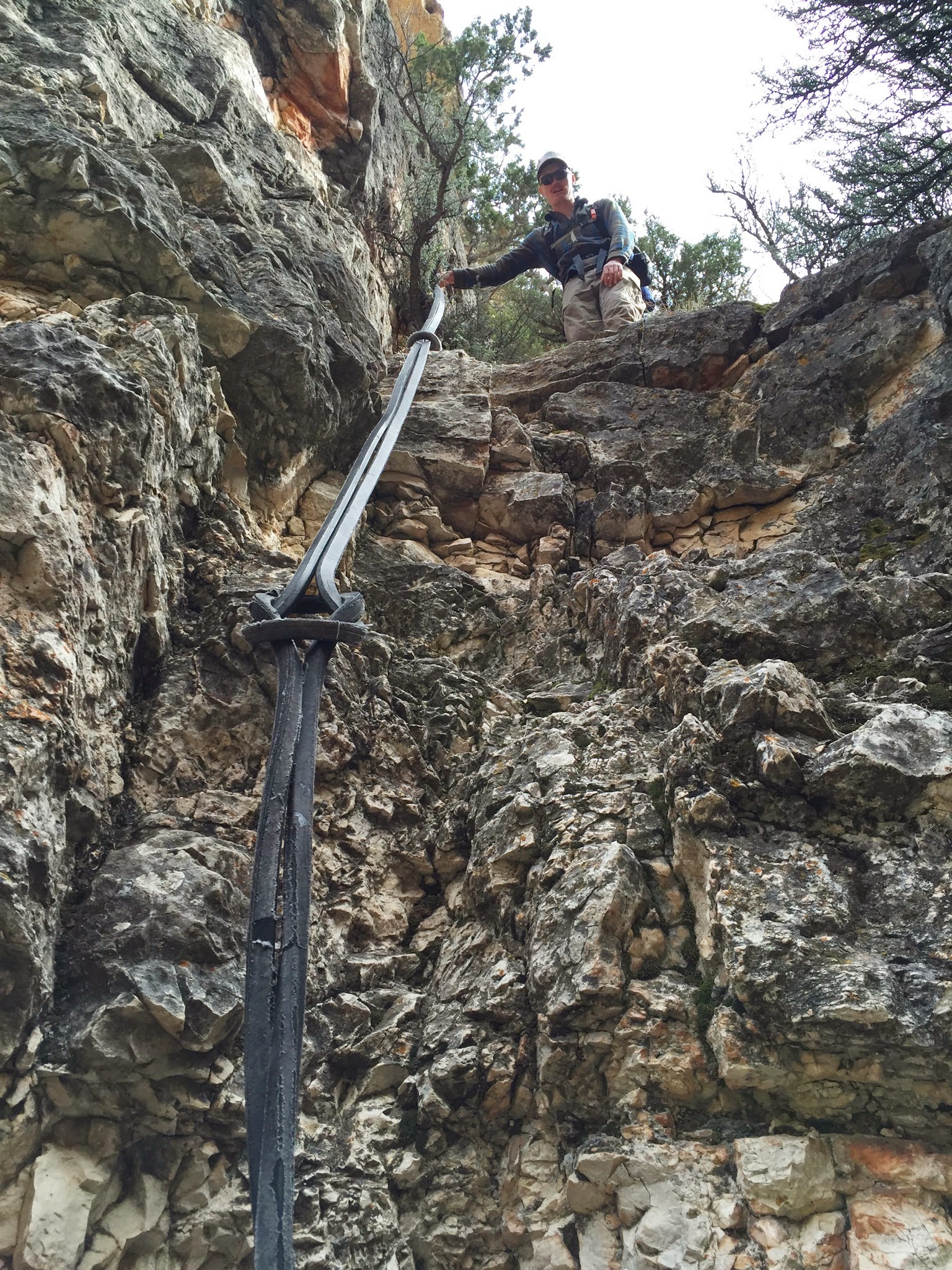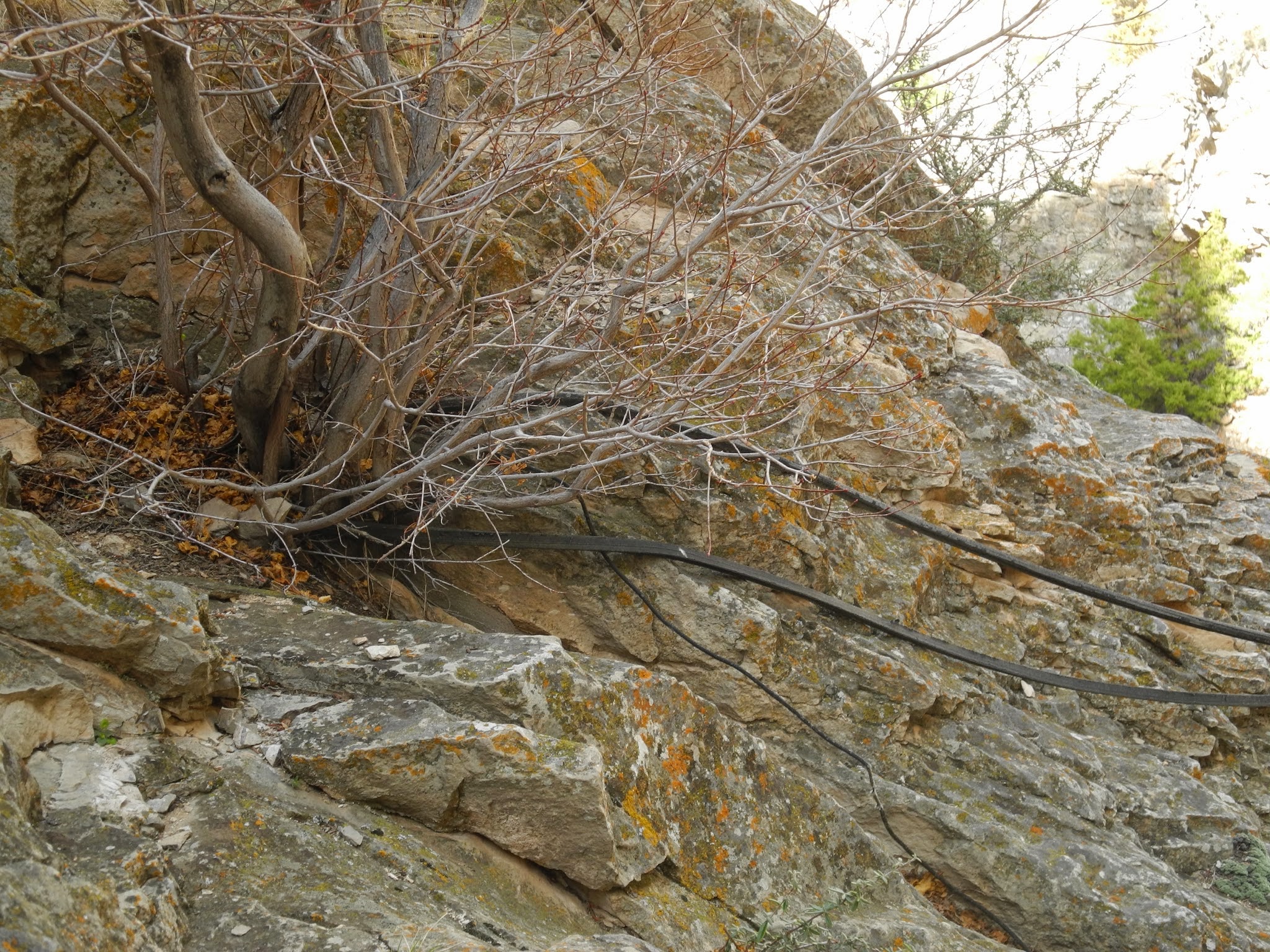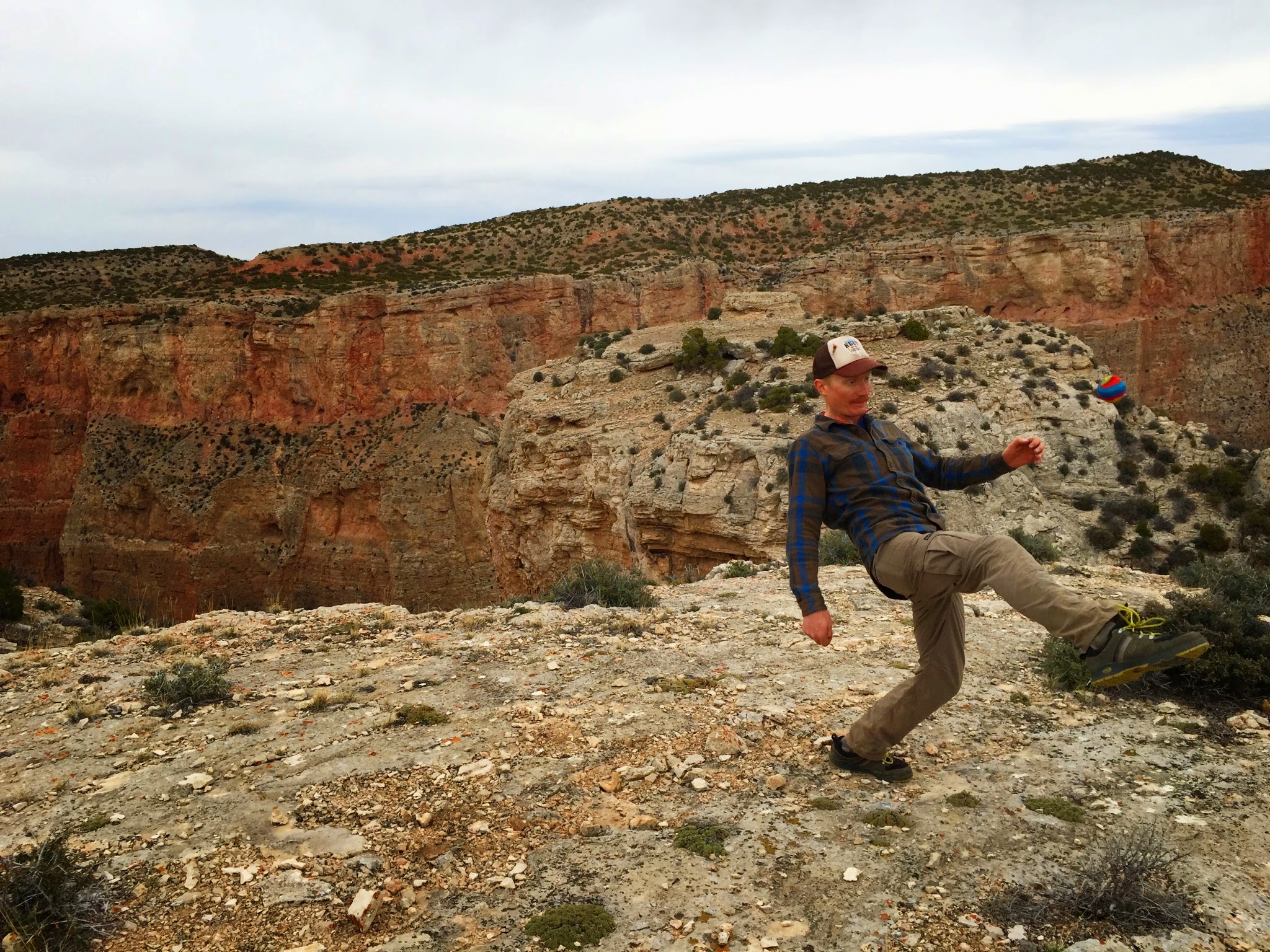Maybe its the fact that I used to hike as part of my job, or that we have some excellent mountain biking trails around Cody that have been rideable all winter, but I rarely grab my hiking boots when going on a weekend adventure. I guess hiking just isn't my favorite form of travel. I almost always prefer two wheels. The exception is when there is a tangible goal, e.g. hunting or fishing. Although hunting season is long gone, spring offers another reason to be out there: horn hunting.
Taking a Chance
Late last month, while visiting one of my favorite bike culture blogs, I came across an opportunity. Blackburn, the venerable bike touring accessory manufacturer, hires six "Blackburn Rangers" to ride a bike from Canada to Mexico. Along the way, the Rangers test and report on new gear, and create social media buzz about the trip. A journey like this has always appealed to me, but I want to add a fishy twist...I propose riding the Pacific Coast bike route, from Vancouver, BC to the Mexican border, while hauling rod, reel, waders and boots in order to fly fish for steelhead along the way.
A quick edit
After six days of swinging flies for steelhead and coming up empty handed, I needed to remind myself what the tug of a fish felt like. I spent two afternoons on the lower Shoshone here in Cody. Winter fishing is one of my favorites. Few people are out and fishing is generally great. I'vebeen playing around a bit shooting video. I set up my camera on a small tripod for this shot and luckily captured the hookup of a nice brown.
The Highs and Lows of Steelheading
I am very lucky. I fish a lot. I even get to take a week off and search for steelhead in far away places, two steps and one swing at a time. My latest trip took me and M back to Idaho. Our destination was the Clearwater River around Orofino. While this is classic steelhead water, prime time to fly fish this river is not winter. Late fall is preferred since the warmer water temps mean the fish are more willing to move to a swung fly. But when you don't have steelhead in your home waters, you have to search for them whenever you can, and sometimes that means winter in Idaho.
Steelhead dreams
 Its September. Every day there are salmon and steelhead climbing fish ladders around dams that clog the once free flowing Columbia and Snake Rivers. As the fish pass the dams, there are counters that record the number and species of fish that pass each day. Fisherman and women across the northwest eagerly watch these numbers which foretell the return of these miracle fish. I was one of these number watchers.Alas, the past year has seen me move farther inland, where steelhead and salmon don't swim. No longer am I in short driving distance of a prime steelhead river. But the lure of swimming chrome is not so easily lost. Not unlike the internal motivation inherent to each anadromous fish on their return journey, my steelhead compass has switched on. Its time to go back to Idaho.
Its been a busy summer for N and I both, and we've both agreed its time for a vacation. How about two weeks in Idaho? Perfect. It will be full of friends, biking, Boise-ing, and maybe even some bird hunting and trout fishing. But what really has me going, is the chance to go back to Secret Creek.
Its September. Every day there are salmon and steelhead climbing fish ladders around dams that clog the once free flowing Columbia and Snake Rivers. As the fish pass the dams, there are counters that record the number and species of fish that pass each day. Fisherman and women across the northwest eagerly watch these numbers which foretell the return of these miracle fish. I was one of these number watchers.Alas, the past year has seen me move farther inland, where steelhead and salmon don't swim. No longer am I in short driving distance of a prime steelhead river. But the lure of swimming chrome is not so easily lost. Not unlike the internal motivation inherent to each anadromous fish on their return journey, my steelhead compass has switched on. Its time to go back to Idaho.
Its been a busy summer for N and I both, and we've both agreed its time for a vacation. How about two weeks in Idaho? Perfect. It will be full of friends, biking, Boise-ing, and maybe even some bird hunting and trout fishing. But what really has me going, is the chance to go back to Secret Creek.
On my first trip to Secret Creek, I hooked 4 steelhead, and landed my first on a skated dry fly. It would be a fallacy to call the motion of which the fish hit the fly a "rise" or "take". That fish flipping destroyed my fly! literally leaping 4 feet in the air in the process. I was dumbfounded; screaming with excitement; unable to contain myself. It was a good trip.
On the second trip to Secret Creek, I woke up with what felt like a hangover. The single beer I had the night before was good, but not what you'd expect to cause a hangover. I ignored the discomfort and continued on with plans. N forgot her boots. Backpacking 3 miles through NorthWest blackberry brambles in sandals is not fun. We also treed a bear about at about 15 feet. By the time we got to the camp, I was exhausted. Not the type exhausted you'd expect. It was 3 miles of downhill hiking. A walk in the park. I struggled to find the motivation to string the rod up that night... I did manage it though. Just long enough to teach N how to spey cast. The rest of the trip saw me in one of two places: sprawled out in the tent napping/sweating, or running in my underwear to the shelter of a nearby sagebrush that offered the only cover to dig a cathole and take care of business. It was not a good trip.
N had better luck. She picked up the Snap-T spey cast in no time, explored the canyon, read a book, cooked camp food, traded beer our beer for Gatoraid, and, oh yeah, hooked, fought, landed, and released her first steelhead. I slept through it. I think she had a good trip.
This brings me to this year. Its redemption time! While the trip is still a month out, I've started to make preparations. My internal steelhead compass has started pointing west. Last night I had a dream I was fishing a coastal stream with my brother. A steelhead took my fly. Like a stone cold natural, I dropped the loop of slack in my hand, waited for the fish to weight the line, and set the hook towards the bank. Easy as that. There was no diarrhea or pre-digging catholes in my dream. Go figure.
This morning, I loaded up my 5weight switch rod and made a detour on the morning bike commute to work. I'm blessed to have a world class tailwater 4 minutes bike ride from the house. With only 40 minutes to spare, I tied on a classic steelhead fly, the Lady Caroline, and promptly caught a nice cutthroat. Nothing like casting a two handed rod with classic steelhead flies to get you prepared for a fishing trip. I'm ready. I can taste the redemption at Secret Creek. I will dream of it tonight...
Explore More
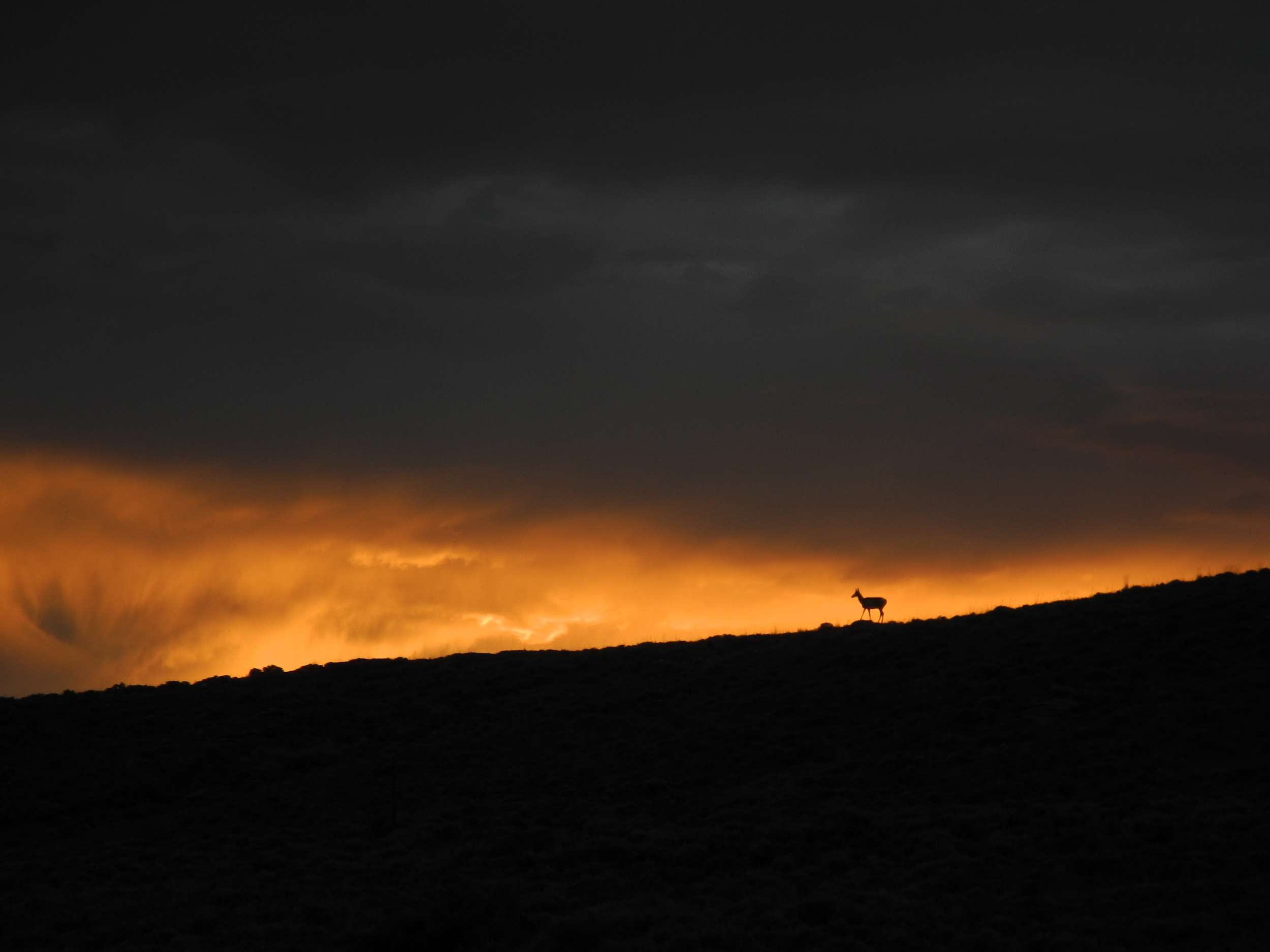 The idea for this trip sparked during a period of brief homelessness. I had just quit my job, and had a number of weeks before I was due in Wyoming. Naturally, I spent the time deer and elk hunting, fishing, and helping rack wine at Hells Canyon Winery.
One leisurely morning at the winery, while enjoying a cup of coffee, I opened a nearby magazine which happened to have an article about an off the beaten path kind of river. The author didn't give specifics, but it was clear that this river is remote, hard to access, and provides tantalizing rewards in the form of solitude and salmo trutta. It also happens to be in Wyoming. I filed this information away in an important part of my mind I call the steel trap. It's standard practice that most things that enter my mind are gone within 5 minutes. In fact, it'd be more accurate to call my mind a steel colander. But when a friend looks over his shoulder before telling of a secret fishing spot, the jaws to the steel trap spring shut, and they are committed to memory.
The idea for this trip sparked during a period of brief homelessness. I had just quit my job, and had a number of weeks before I was due in Wyoming. Naturally, I spent the time deer and elk hunting, fishing, and helping rack wine at Hells Canyon Winery.
One leisurely morning at the winery, while enjoying a cup of coffee, I opened a nearby magazine which happened to have an article about an off the beaten path kind of river. The author didn't give specifics, but it was clear that this river is remote, hard to access, and provides tantalizing rewards in the form of solitude and salmo trutta. It also happens to be in Wyoming. I filed this information away in an important part of my mind I call the steel trap. It's standard practice that most things that enter my mind are gone within 5 minutes. In fact, it'd be more accurate to call my mind a steel colander. But when a friend looks over his shoulder before telling of a secret fishing spot, the jaws to the steel trap spring shut, and they are committed to memory.
Fast foreword a few months to winter in Wyoming. Having only a part time job, I had plenty of time to research and plan summer trips. I gathered what I could about the river, and made plans to visit in the summer. Directions were vague, the guidebook said not to go by yourself, and to bring a map to navigate the maze of BLM roads.
Before leaving, I carefully laid a route on GaiaGps. 20 miles on gravel and two track roads. Bikes on the back in case we the road turned bad, or if we augered the truck into a mud hole. The gps track proved invaluable while navigating, and we arrived at our destination with little problem. Our river is contained within a BLM Wilderness Study area. A mountain stream that grows into a desert river flowing through the sagebrush flats into a limber pine lined canyon. Shallow granite walls flank either side of the river providing roosts for hawks and peregrine falcons. Evidence of moose and deer abounded along the riverside path.
I've been stubbornly pushing the grasshopper season this summer. I tied up a slough of hoppers this spring in anticipation, and I have been throwing them in vein for the past few weeks. No interest in the hopper, we must be a few weeks soon. Finally we came to a beautiful plunge pool. It was the type of pool that when I came to it, I said, "If I can't catch a fish here, I'm no fisherman...Not leaving until I catch one." I had seen a few stonefly shucks earlier, so I put on the tried and true Gardiner-Special Matt Minch Golden Stone. I hooked and landed my first rainbow of the day within 3 casts. I don't know why I'm so reluctant to fish nymphs. It probably comes from growing up in a family of die-hard dry fly fishermen. (One on a dry counts for 3 on a nymph!...right?). The truth is that fishing a nymph on this type of water (clear pocket water) is every bit of fun as fishing dries. The clear water and short line techniques allows you to see and feel every take. I was having a blast.
Nancy and I both pulled in a few more rainbows before I was reminded that we still had a 4ish hour drive back to Cody. Time to start hiking back to the truck. Its nearly impossible for me to hike back along ariver and not cast a few last times to the best looking water. I threw one perfectly placed cast over a cross current, and right behind two large boulders. The golden stone was immediately taken and the brown trout jumped out of the water pulling clicks off my hand-me-down Pflueger Medalist. Its humorous how much these moments make me giggle and whoop.
These kinds of trips are some of my favorite. Not because the fishing was epic, or that I caught the biggest fish of the season. In fact, I probably could have stayed home and caught more fish withing 30 minutes of my front door. Its the exploration, planning, and unknown that I love. This trip has been coming together for months. I wasn't even sure we could drive all the way in due to recent rainstorms. I saw more wildlife this weekend than I caught fish. Hooked as many ticks as trout. You never know what you will find on a new river. It could be blown out, or worse. Don't let that stop you. You don't know until you go.
Liquor Store
 In the world of bike touring, bike packing, and commuting, there is a lot of talk about gear, cargo hauling options, and the latest best thing. I've made a breakthrough discovery that will revolutionize the way you carry things on your bike...or scooter, or whatever.
In the world of bike touring, bike packing, and commuting, there is a lot of talk about gear, cargo hauling options, and the latest best thing. I've made a breakthrough discovery that will revolutionize the way you carry things on your bike...or scooter, or whatever.
The bike shop closes early on Fridays. Today, I used my two extra hours to run an important errand: restocking the beer supply. I picked up a sixer of nice beer, and a 12 pack of PBR (don't judge, I started drinking PBR before it was cool). The six pack fit nicely in my rack mounted pannier. The 12 pack on the other hand, wouldn't quite squeeze in with the IPA. This is where the latest innovation in bike touring/packing comes in...
Let me introduce you to the bungee strap. It's made of numerous strands of elastic rubber bands twisted together, covered by classy looking ornamental yet functional sheath, and topped off with plastic coated wire hooks on both ends. BRILLANT. This simple piece of gear will revolutionize the way you pack for you next bikepacking adventure. Hand sewn frame bag you ask? Forget it, just bungee that dehydrated meal to your seat tube. $150 handlebar mounted dry-bag? Nope, bungee your sleeping bag there. See where I'm going with this? Do yourself a favor. Go purchase one of these life saving inventions, and go ride your bike!
I owe this discovery all to this excellent gentlemen pictured here:
It's been said that "Great minds think alike." In this instance, I couldn't agree more.
Pryor Mountains
 The Pryor mountains lie off the beaten in southern Montana. Though small in comparison to other mountain ranges in the area (Bighorns, Beartooths), they are still quite large. I drove past the Pryors this winter on a weekend fly fishing trip to the Bighorn River and knew that they needed to be explored by bike.
The Pryor mountains lie off the beaten in southern Montana. Though small in comparison to other mountain ranges in the area (Bighorns, Beartooths), they are still quite large. I drove past the Pryors this winter on a weekend fly fishing trip to the Bighorn River and knew that they needed to be explored by bike.
I couldn't find much information about biking in the Pryors, so most of my route planning consisted of hours plotting lines on Gaia GPS, and (look for an upcoming post about online route planning). The best information I found came from The Pryor Mountains website. Although this is a hiking focused website, it provided a great explanation of existing trails, roads, history, and issues.
The coolest thing about this ride, and the Pryors in general, is the diversity of the surrounding environment. The mountains rise from the sage brush and prickly pear dense high desert of the Bighorn Basin at 5,000 ft elevation and climb to just under 9,000 ft. During the long pedal up, the sage gives way to juniper and limestone formations that conjure visions of spaghetti western films. The maze like limestone canyons would be a welcome sight for a cattle rustler taking shelter form the lynch mob at his tail. Approaching 6,500 ft, the drainages begin to support bigger plants including douglas fir and quaking aspen. On the plateau of the range, sub alpine environment takes hold, lessening the constant threat of flats from the prickly pear that follow anyone biking in the high desert. The riding gets easier here, since most of the climbing has been done.
For this ride, I grabbed my trusty Surly Krampus. I have a number of overnight bikepacking trips planned on the Krampus this summer, so I wanted to field test a few changes I've made to the bike. Also, the generous 29" x 3" tires would be a good match for the rocky, loose climbs encountered on the marginally maintained forest road. My route started at the mouth of Bear Canyon on the western flank of the range. Forest road 2492 climbs sometime steeply along the west side of the canyon, eventually reaching the plateau. Thankfully, I was able to ride the majority of the road, only resigning to push at a few of the steepest sections. Once on top, the miles ticked away and I found myself wishing I had packed overnight gear, allowing a more thorough exploration of Big Pryor Mountain.
Satellite images showed an unnamed (and unofficial) ATV trail leading from the flank of Red Pryor Mountain along the southern edge of Bear Canyon. The trail down is too steep and rocky to really let loose, and requires almost constant braking. Once the descent levels off a bit, a few cow trails can be linked together to provide a few minutes of fun singletrack. I found a description of a switchbakcing trail down into Bear Canyon on the hiking website mentioned earlier, and I was eager to try some more single track. This is one of the few places that the canyon walls diminish, and it is possible to drop down into Bear Canyon. Using the Gaia GPS app on my phone, I found the remains of the abandoned trail and began the descent into Bear Canyon. The trail would be a fun ride had it not been overgrown with trees. The canyon bottom however, is a jungle; home to deer, bears (witnessed by a steaming pile of you know what) snakes (witnessed by coming to a screaming halt), and mountain lions (not witnessed, just presumed). Some crawling and bike pushing leads way to a faint path that is rideable with a little ducking and finesse. Thankfully, this stretch of bushwhacking is short lived, and quickly leads back to a BLM road that returns to the starting point.
Though not an epic singletrack mecca, the Pryors are a worthy place to explore by bike with amble opportunities for overnight bikepacking. Expect long, rocky climbs, diverse environments, exceptional views, and adventure. Plan to go in spring and fall as high summer could be very hot at lower elevations. I know I'll be back to explore more of the great things they have to offer.
Beartooth Pass
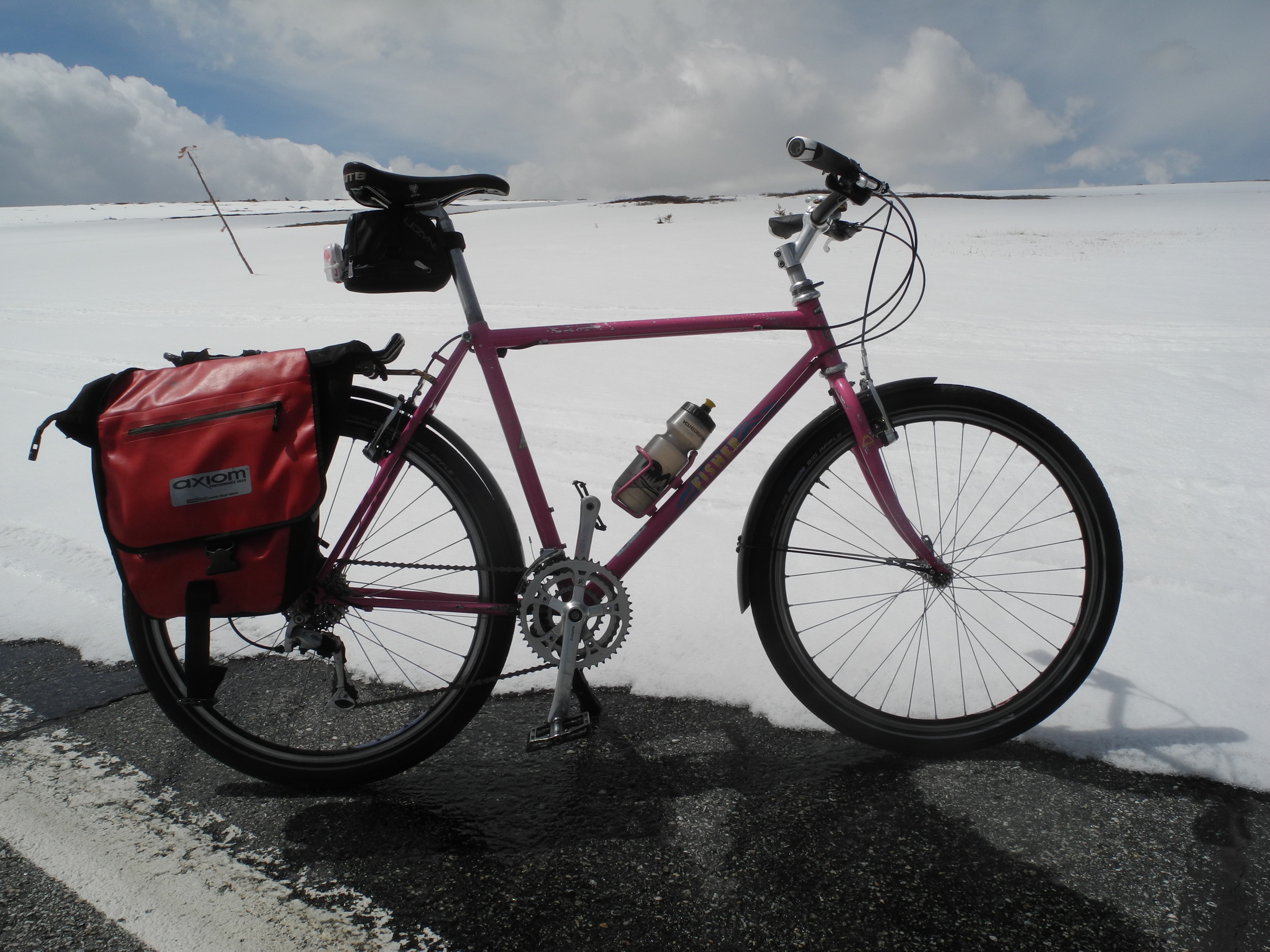 I'm as guilty as anyone when it comes to buying into the consumptive, materialistic lifestyle we Americans lead. As a bike mechanic and salesperson, its kind of my job to know the latest and greatest gadget, and sell it to you. I'm sure I'm not the only one out there jonesing pretty hard for the new Shimano XT 11 speed drive-train. But there is something I admire more than showing off that shiny new whatever. And that is making do with what you have.
Anyone who has visited northwest Wyoming, knows we have some seriously beautiful country. Most folks experience it through the windshield while driving one of our mountain passes. Many of these roads are closed in the winter, plowed in April/May, and open to traffic soon after. There is a magical time between the grinding of the snowplows and the opening of the gates when the roads are only open to human powered travel. This is the time to see them by bike!
I'm as guilty as anyone when it comes to buying into the consumptive, materialistic lifestyle we Americans lead. As a bike mechanic and salesperson, its kind of my job to know the latest and greatest gadget, and sell it to you. I'm sure I'm not the only one out there jonesing pretty hard for the new Shimano XT 11 speed drive-train. But there is something I admire more than showing off that shiny new whatever. And that is making do with what you have.
Anyone who has visited northwest Wyoming, knows we have some seriously beautiful country. Most folks experience it through the windshield while driving one of our mountain passes. Many of these roads are closed in the winter, plowed in April/May, and open to traffic soon after. There is a magical time between the grinding of the snowplows and the opening of the gates when the roads are only open to human powered travel. This is the time to see them by bike!
The Beartooth Highway leaves Red Lodge, MT following Rock Creek, a tumultuous mountain stream strewn with rounded boulders, a result of eons of erosion. Twelve miles out of town, a gate blocks spring traffic and the climb commences. It's another 11 miles to reach the Beartooth Plateau, and the first slackening of grade. Although daunting by looks, the road is a pleasant climb, never reaching a critically steep pitch. The length of the ride is determined upon how far MTD has plowed the road. This weekend, we made it 10 miles past the first gate. Rock slides, snow, and gravel are strewn along the entire road, requiring vigilance on the cruise back down.
Working in bike shops for the past 15 years, I've always been concerned with the latest and greatest in the bike world. When I first got into the sport, I often judged a rider's skills by what components he had on his bike. Sometimes I would laugh and point at someone riding a dated bike on the trail. "Dude, get with the times!" What impressed me was seeing the latest XTR component on a clean, new frame. While I still geek out over the new shiny things, I've had a bit of a change in heart. No longer do I laugh and point. Now, admiration abounds for those riding a ridged 90's something cantilever wreck on the Boise foothills trails rather than the kit-clad cash droppers to often grouping up on trail rides after work. And while I seriously worry about the safety of a Wall-Mart Next pedaling youth, I smile, and realize they are riding a bike, and what can get better than that.
With these sentiments in mind, let me introduce you to the 1989 (Gary) Fisher Celerity. I picked up this rosy gem in Moscow, ID while attending the University of Idaho, and wrenching at Paradise Creek Bicycles. Since then, it has served as my daily commuter, errand runner, make-due-road bike, and has never let me down. Something that has always drawn me to bicycles, if not the ONE thing, is how efficient, effective, and perfect they can perform when well cared for. I get more satisfaction from resurrecting a two wheeled relic then assembling the latest Di2 electronic shifting road bike. Such is the case with this bike. Made up of a conglomeration of dated components, this bike works flawlessly.
Reaching for the Celerity was a no brainer when heading out for the Beartooth ride. The simplicity of throwing a leg over a bike and pedaling. No fancy lycra, color matched riding kits, or power meter cranks. Don't let consumerism make you believe these things are necessary to enjoy cycling. Dust off that old bike, bring it to your local bike shop for a tune up, and get on your bike and ride!
Fly-fishineering
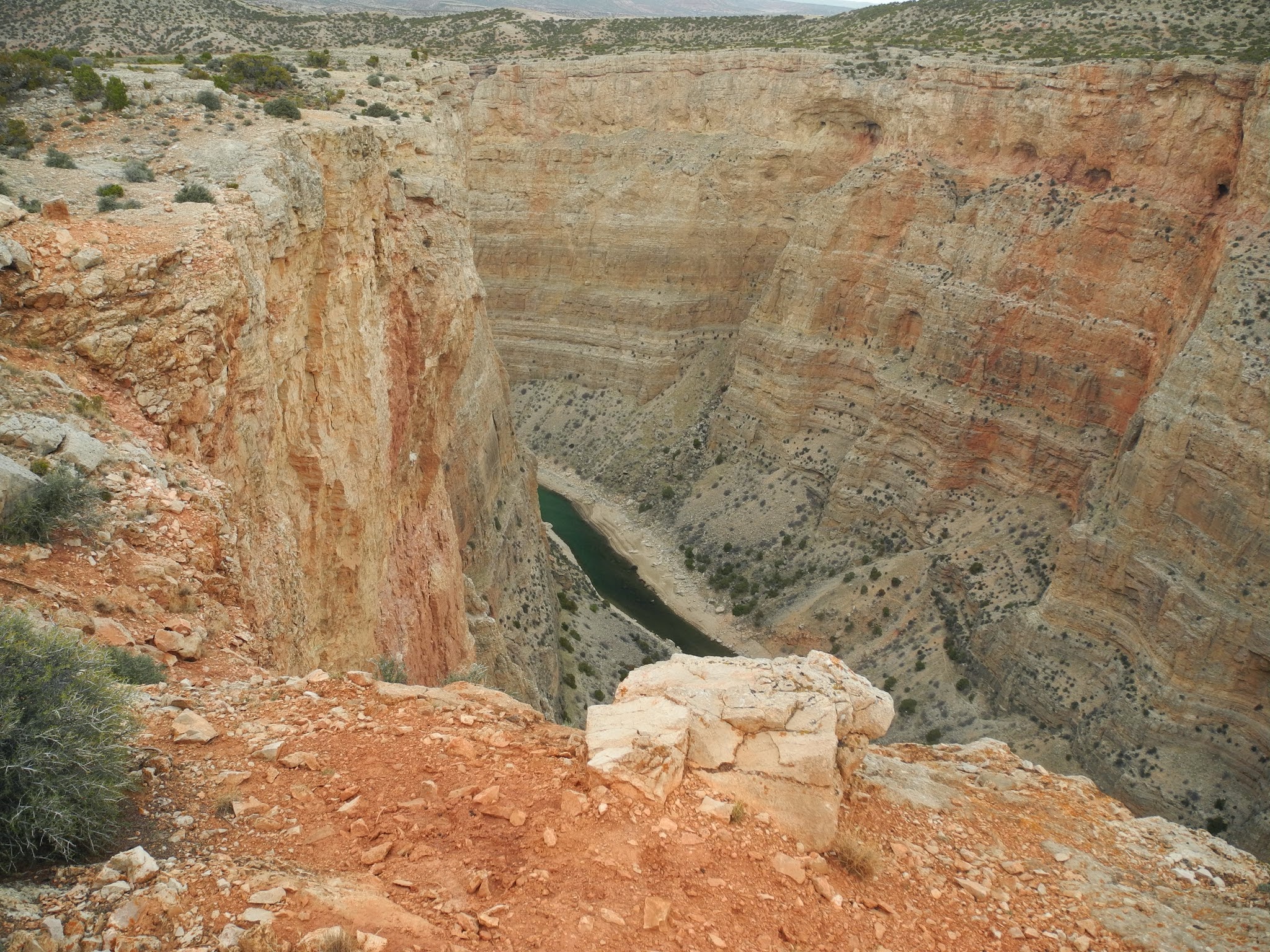 Since arriving in Wyoming, I've been rewarded with a plethora of trout streams to explore. Being new to the area, I listen closely when people talk about a new destination and mentally bookmark place names and descriptions. One creek that was mentioned by a number of people was often accompanied by terms such as: monster browns, pigs, and inaccessible. Naturally, this peaked my interest.
Access to the lower stretches of the creek are limited by towering cliffs that only bighorn sheep and falcons can navigate. The upper stretch is accessible by gravel road, but early season snow pack limits this. Being March, I oped to reach the lower portion of the stream where it nears Big Horn Reservoir. After pouring over topos for a week, I identified a side canyon that just might provide a route down to the canyon proper. I asked around town and heard rumors about a rope ladder and a dangerous approach, but no real conclusive beta. I packed the truck with mountain bikes, hiking boots, fishing gear, and headed towards Little Mountain.
Since arriving in Wyoming, I've been rewarded with a plethora of trout streams to explore. Being new to the area, I listen closely when people talk about a new destination and mentally bookmark place names and descriptions. One creek that was mentioned by a number of people was often accompanied by terms such as: monster browns, pigs, and inaccessible. Naturally, this peaked my interest.
Access to the lower stretches of the creek are limited by towering cliffs that only bighorn sheep and falcons can navigate. The upper stretch is accessible by gravel road, but early season snow pack limits this. Being March, I oped to reach the lower portion of the stream where it nears Big Horn Reservoir. After pouring over topos for a week, I identified a side canyon that just might provide a route down to the canyon proper. I asked around town and heard rumors about a rope ladder and a dangerous approach, but no real conclusive beta. I packed the truck with mountain bikes, hiking boots, fishing gear, and headed towards Little Mountain.
I was warned that the road was rough, but I didn't expect to be in 4 low within minutes of turning off the paved highway. Glad I had a reliable truck, capable tires, and a spare, we spent the next hour+ lumbering up and over rocks and ruts before finally reaching the plateau of Little Mountain. Once on top the going got easier and we navigated to our destination. At this point we traded 4 wheels for two. There is a plethora of BLM roads on top of Little Mt, but not all of them allow motorized access. This is where the mountain bikes come in to play. Fishing gear goes in the panniers, hiking gear in the backpack.
A short pedal across sage and juniper flats brought us to our drop-off point. Stashing the bikes behind some juniper, we loaded the waders into backpacks and headed down. Our side drainage started out gradual, winding through age old juniper trees. As we neared the canyon proper, the terrain steepened. This is where rock climbing skills came in handy. Ahead, we could see a definite drop off that could possibly put a quick end to downward progress. This is were we found the first "rope ladder" which turned out to be less of a ladder and more of a rancher's solution to rock climbing. Someone who had similar aspirations hauled in what I can only assume was a huge fan belt to some sort of gigantic farm equipment. The stout rubber belts were probably 10 feet in diameter if laid out in a circle. Three of them were girth hitched together with the top one looped around a rock as an anchor. I inspected the whole system and was confident enough to trust it.
N elected to go first. Using the belt as an aid, she made short work of the 10' drop to the landing of a limestone amphitheater. I followed suit and we continued our way down. The route increased in pitch and we found ourselves down-climbing often and came to two more tractor belt lowers, each increasing in length and steepness. I could tell that were were getting closer to final descent and was excited to lay eyes on the creek. Rounding a corner, we came to the tallest belt lower yet. Up to this point, every belt was solidly anchored to a large rock that felt comfortable trusting. This one...not so much. No appropriate rock being available, the belts were looped around a bush that was half dead, growing out of a crack in the limestone. On top of that, these belts were of a smaller diameter and considerably more weathered. After mulling over the situation during lunch, we decided it wasn't worth the risk. The considerable lower would require the climber to put their entire weight on the system, both during the lower and on the climb back up. Not worth the risk
From the beginning, I half expected not to reach the canyon floor. The lines on the topo map were stacked awfully tight. Many people I asked said the route doesn't exist, or that there is no way down. Although we didn't reach the bottom, its clear that other's have.
I love this type of adventure: a couple of nondescript mentions of a hard to reach creek, no solid beta anywhere to be found, pouring over topo maps and satellite images, using bikes to access hard to reach places, potential rewards of unmolested lunker browns...next time I'll get to the bottom...





